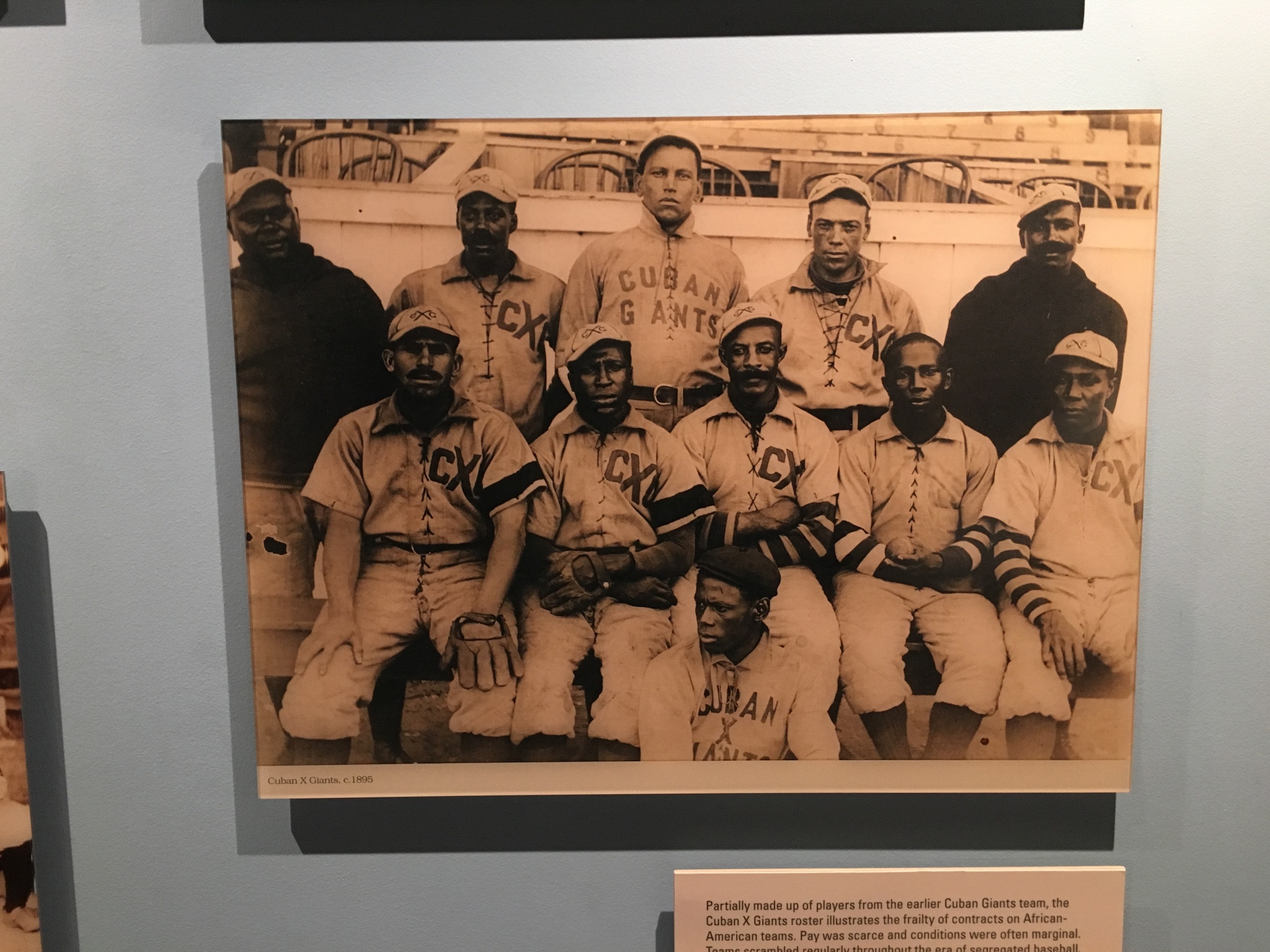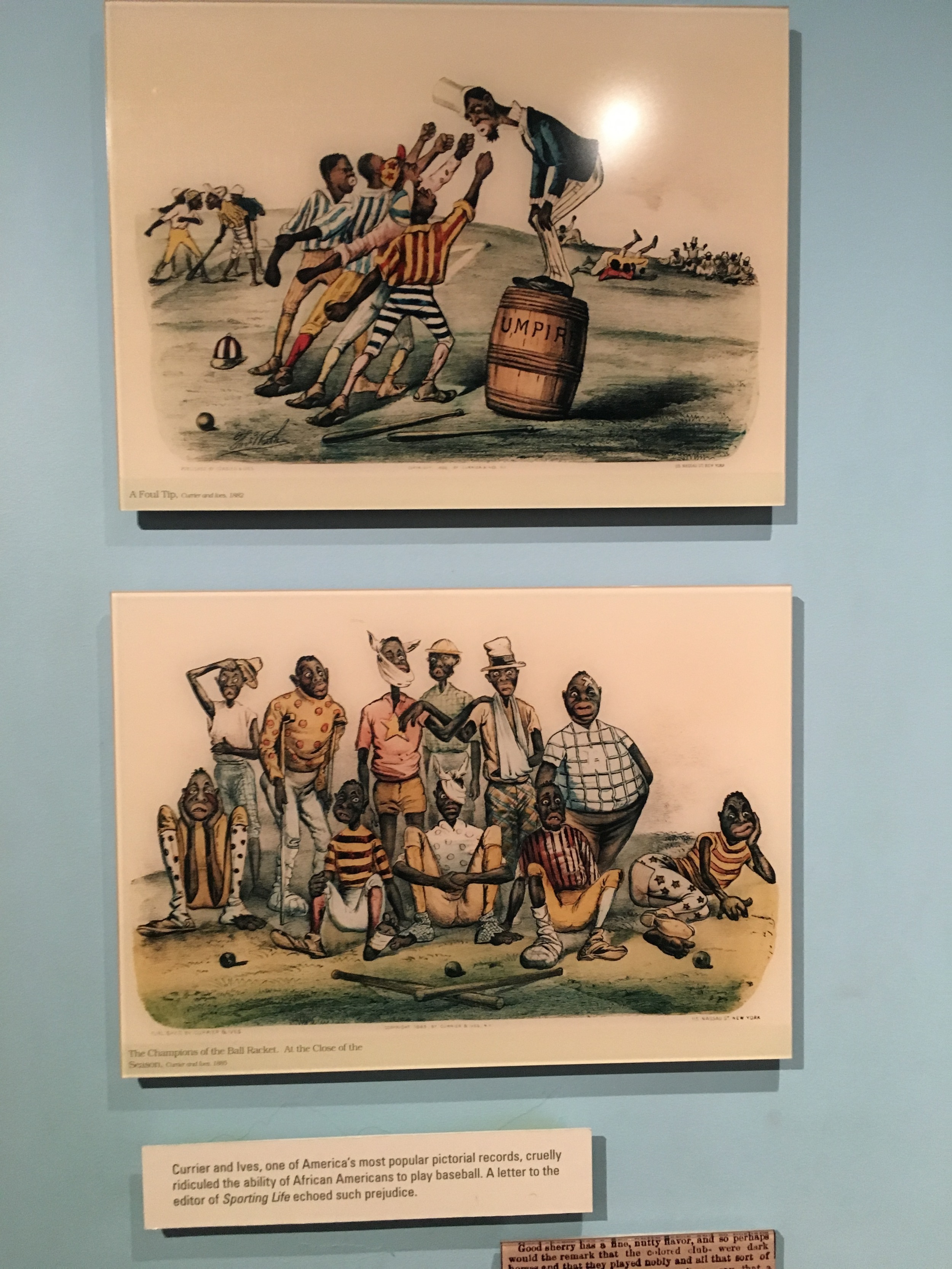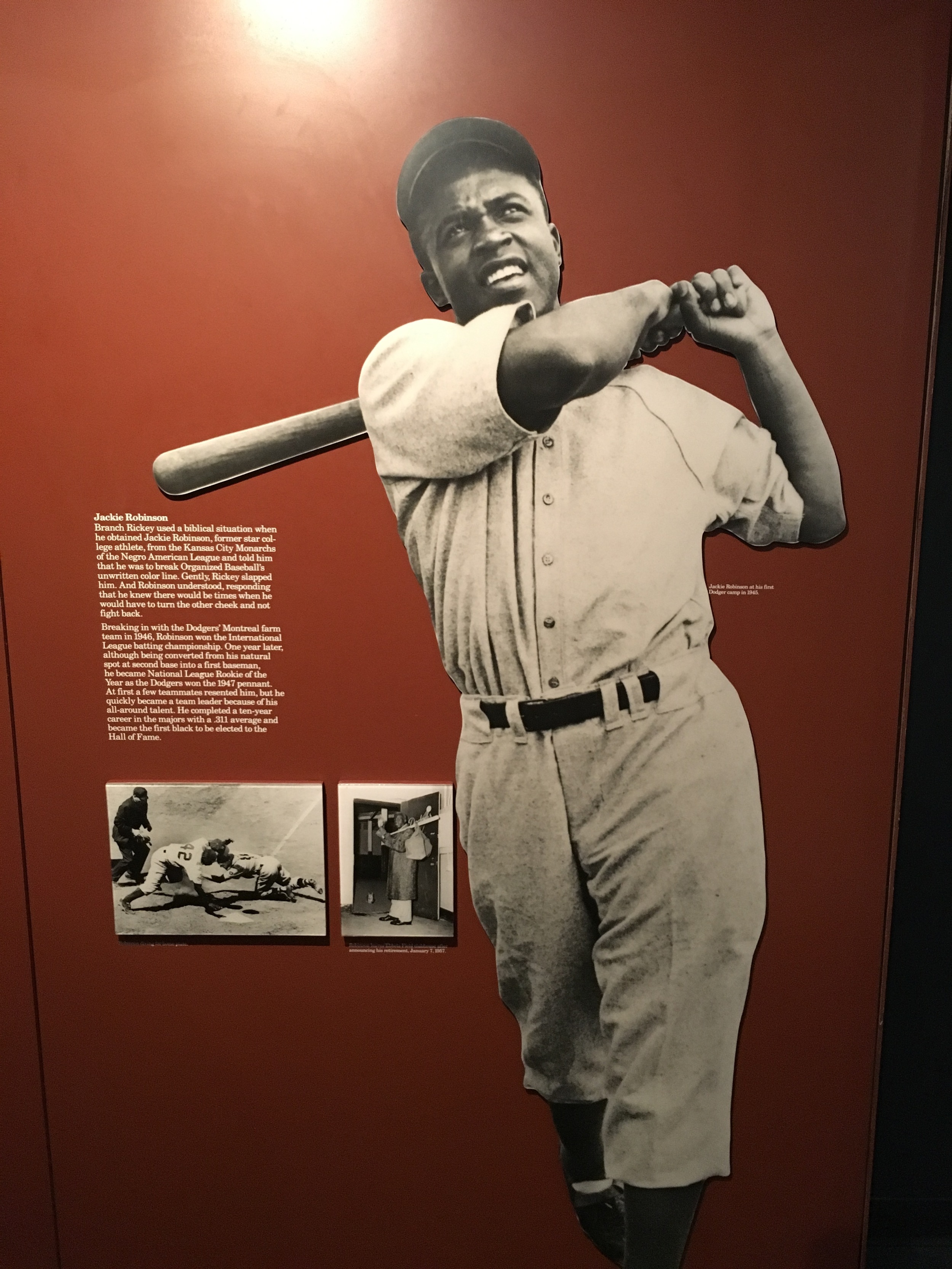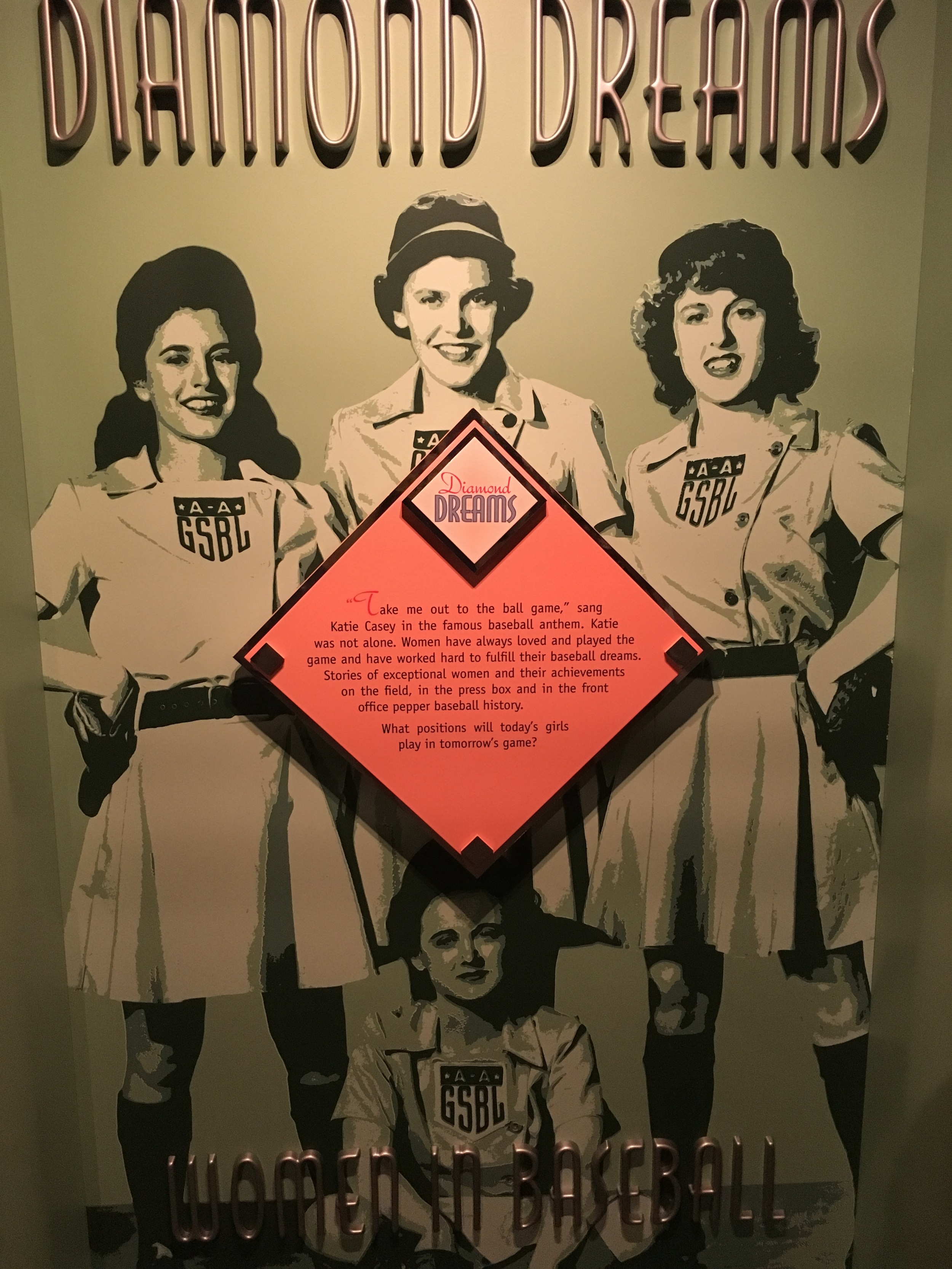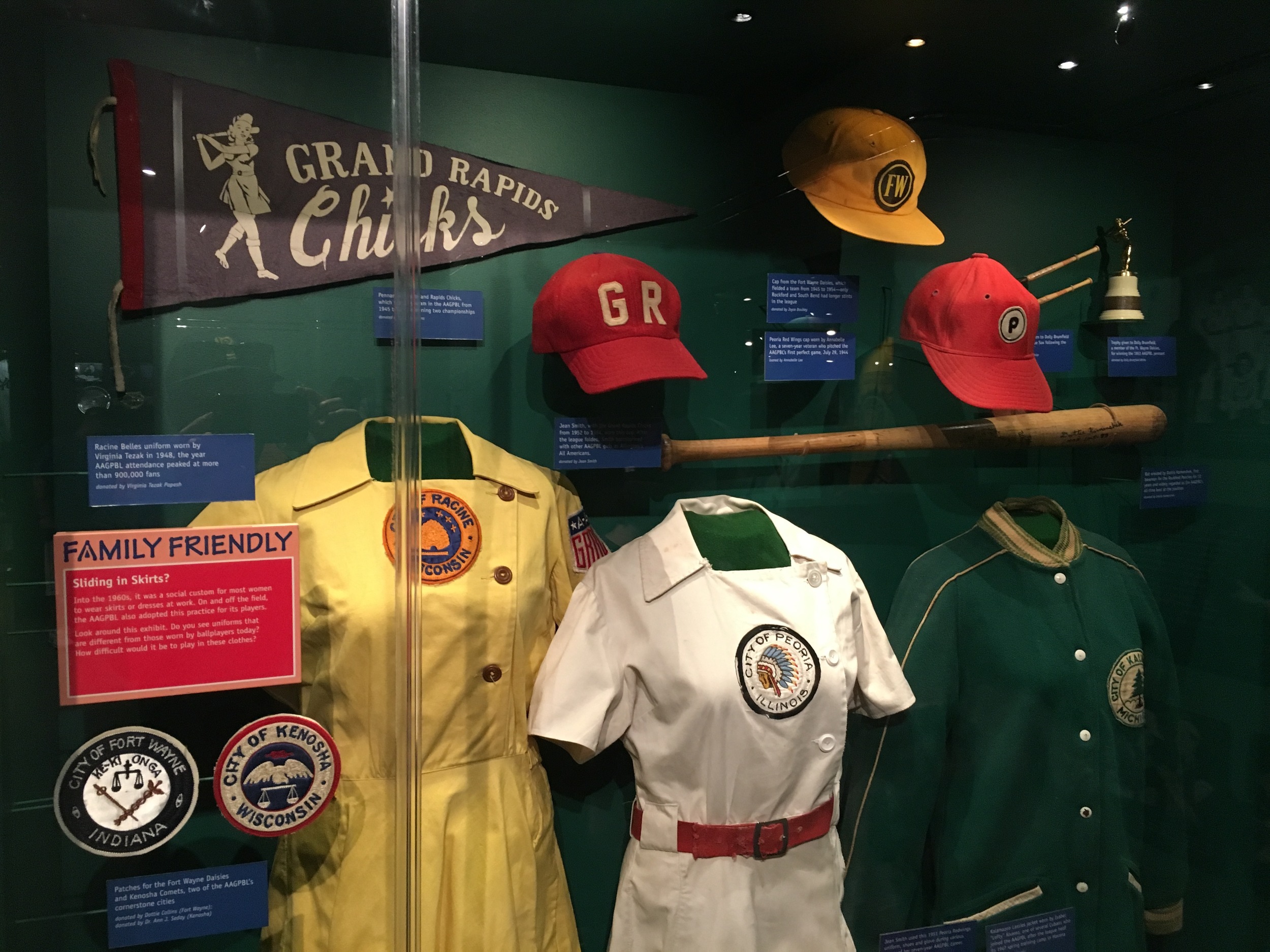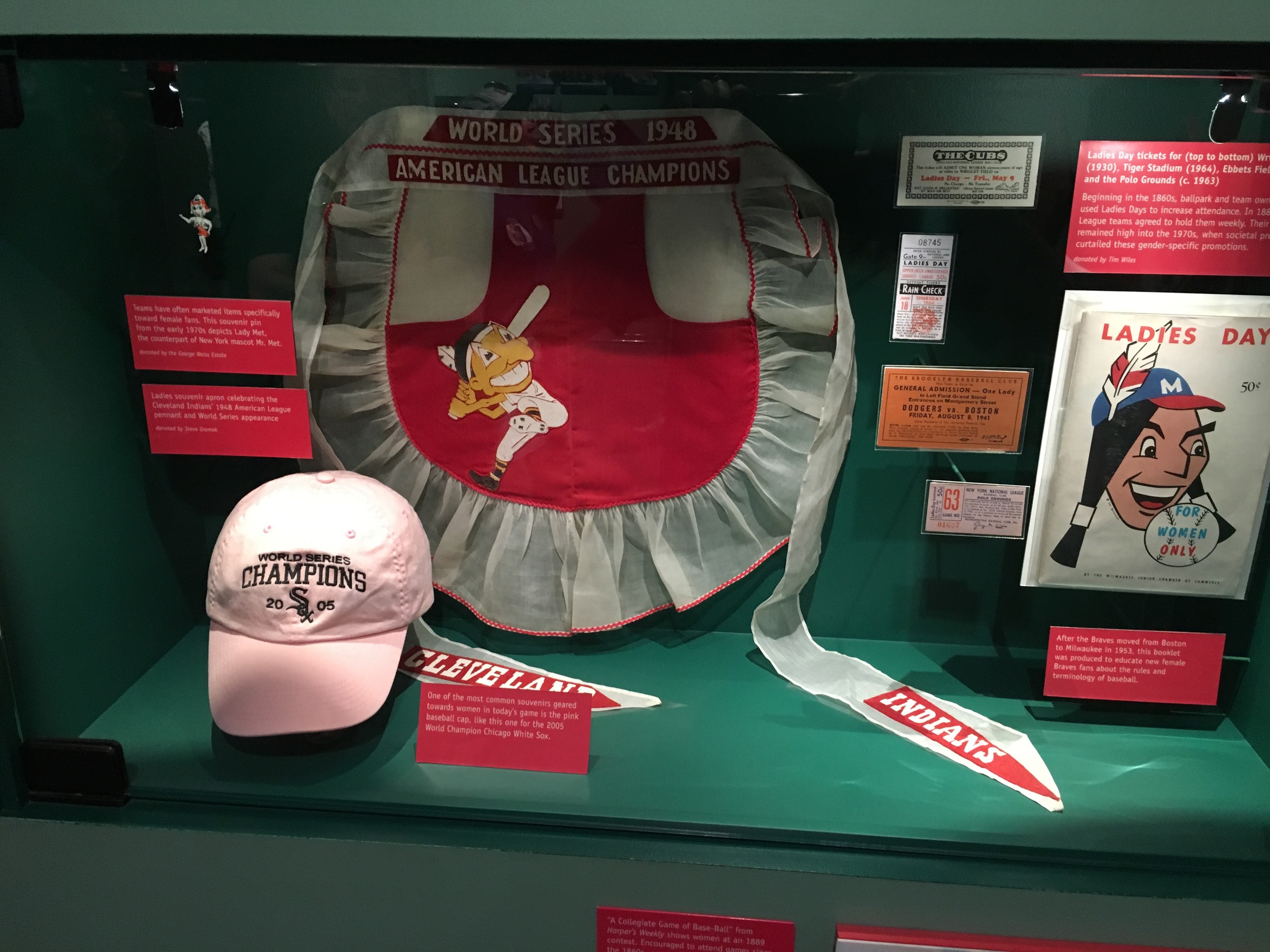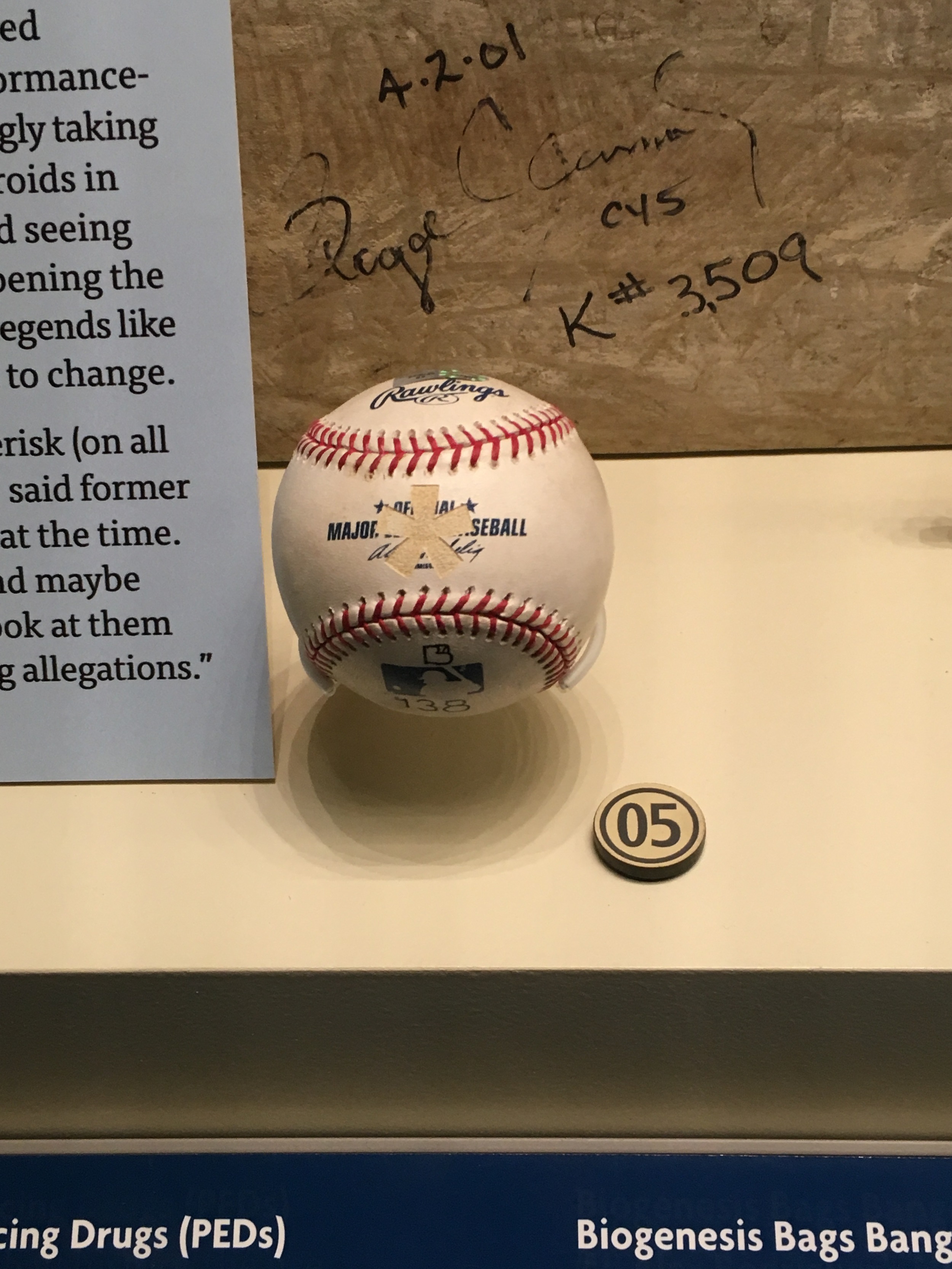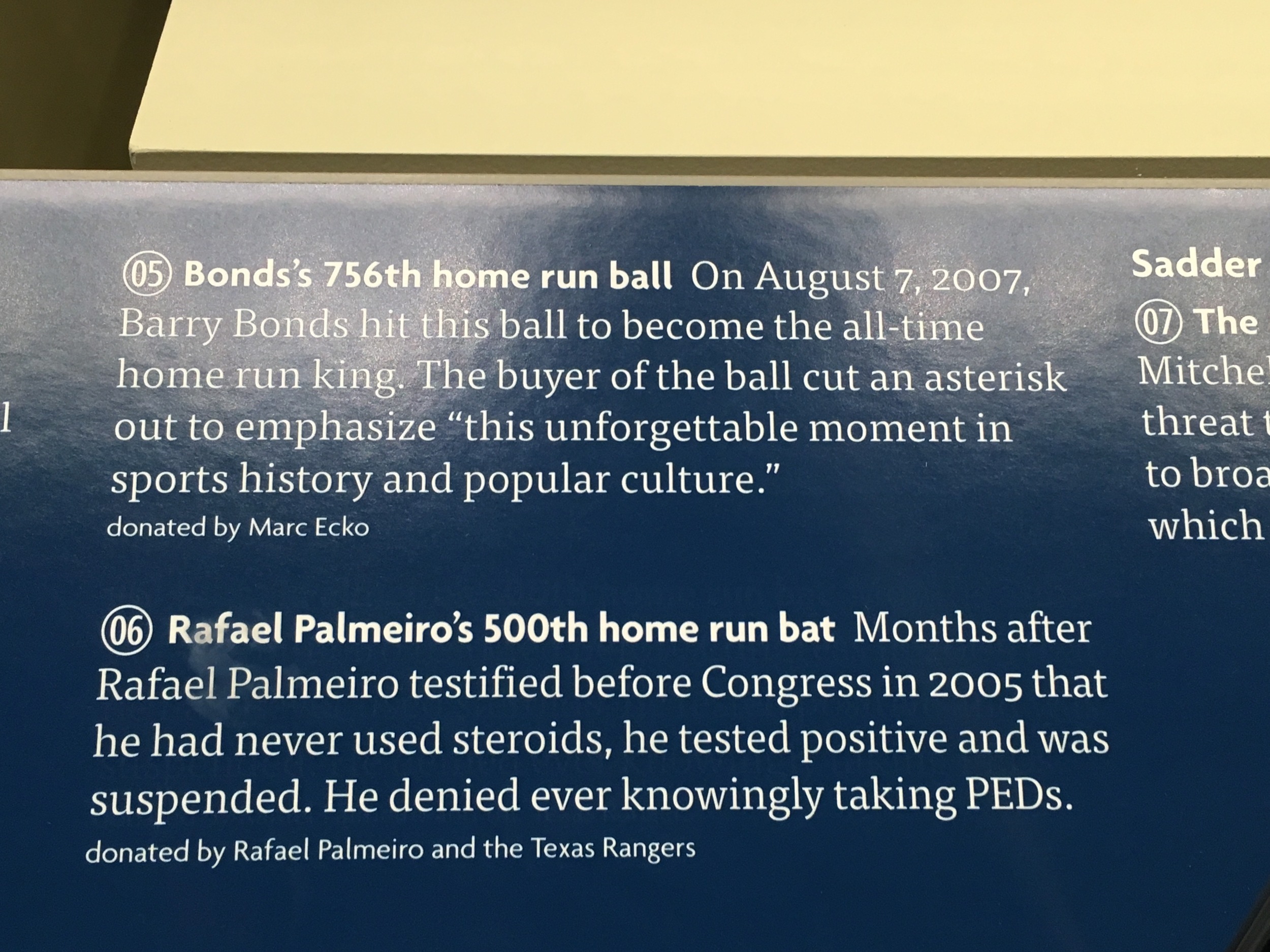Dues paid in full, Junior and Seattle get their day in the sun
My preconceived notions of Cooperstown had me expecting something out of 1950’s small town middle America. I was expecting to be dropped into a post card or a black and white Nick at Nite rerun that I’d halfheartedly watch as a kid after Looney Tunes was over. Ornately cut, emerald green lawns with modest, but well cared for houses with 2.5 bedrooms and a carport. Perhaps something not unlike the town depicted in “The Sandlot.” And bunting. Lots of red, white, and blue bunting. I wasn’t too far off, except the houses are far more colonial in style and the town, or village as they call it, is even smaller than I was expecting. There are almost no chain businesses in the downtown area and the year round population is just under 2,000. For a town clearly not meant for huge crowds, it handled 55,000+ baseball fanatics pretty well for a couple days.
I was a bit wary of the spectacle of the whole thing. So much naked hero worship. Overwhelming nostalgia. I recall having similar concerns leading up to the festivities for Ken Griffey, Jr.’s Mariners Hall of Fame ceremony prior to the game on August 11, 2013. Having already been through two less than ideal departures from the man I grew up idolizing, I honestly feared the worst. Luckily, my fears were put to bed relatively quickly that day as Junior made a wonderful, emotionally honest, and largely ad-libbed speech that left me in happy tears. He even came pretty close to an apology for how he left and for how he came across coarse sometimes over the years. We’ll call it “acknowledgment,” which was good enough for me. Any hard feelings were forgiven as Griffey showed the real adult maturity that he had long seemed to avoid while he was still playing. Since that speech, I’ve been looking forward the next one – the big one – on the day of his induction to the Major League Baseball Hall of Fame.
Mariners fans who watched Griffey since his rookie year had been saying he was clearly a first-ballot Hall of Famer since, I don’t know, probably 1997 or so. Seeing it actually come to fruition is another thing altogether. The day the voting results were announced and Griffey had received the highest percentage of any Hall of Famer ever felt like national validation for something Northwesterners had known for two decades. He was among baseball’s very best players, he was getting his due, and he was a god damn Seattle Mariner.
This was Griffey's first walk-off home run ever and it happened right after he returned from breaking his wrist on the center field wall a few months earlier. Look at how fired up Joey Cora is. Look at that INCREDIBLY COOL AND SMOOTH high five on the way to home plate. Of all of the Griffey highlights, this one captures so much of what made him awesome and what made 1995 so thrilling. MLB makes it impossible to find this video with the Niehaus call overlaid, so just picture Dave absolutely losing his mind while you watch this.
The Journey
I remember telling my dad on the day of the 2015 induction that you-know-who is on his first ballot next year and hey wouldn’t it be cool to be there to see the Kid go into the hall? We’d talked about making a trip to Cooperstown someday many times over the years, but never had an excuse to go as good as this one. My dad mentioned it to my step-mom off handedly, who immediately started researching the trip and the next thing I knew, we were going. Bless your heart, Nancy. Thank you.
It was quite a trek to get to Cooperstown from Seattle. After a brutal 7+ hour weather delay in Chicago, we arrived in Syracuse at 2 AM and then drove for 2 hours through the middle of nowhere New York State and rolled up to our Cooperstown motel around 4:30 AM. After sleeping for a few hours, we began our Hall of Fame experience in earnest. Spoiler alert: it was well worth it.
Hi.
Bricks, History, and Grit
The Baseball Hall of Fame and Museum is humble looking from the outside, which is fitting for a sport that has always valued modesty, but you can easily spend half a day or more exploring its 3 stories of history. Which is exactly what we did on that Friday of our weekend at the Hall of Fame.
The Hall itself, with 312 player plaques, is on the first floor. Warmly lit with skylights and outlined with marble pillars and fixtures, it drips with class and a palatable feeling of awe. In comparison with my experience at the Japanese Baseball Hall of Fame, walking through and knowing or recognizing the majority of the player plaques felt like my own personal walk through the last century or so of American history.
From there, we went on to explore the other two floors. I absolutely loved the exhibits on the second floor, starting off with displays from each current team in a faux locker room layout, and then going through each era of baseball since the very beginning. The exhibit on the Negro Leagues and eventual desegregation of Major League Baseball, “Pride and Passion: the African American Baseball Experience,” was simultaneously heartbreaking and uplifting. The same could be said for the “Diamond Dreams: Women in Baseball” section. Thanks to the wonderful film “A League of Our Own,” we all know the story of the rise of women’s baseball during World War II and it’s clear that it absolutely flourished during those few short years. But, it’s also clear how quickly and decisively professional baseball was taken away from women as soon as the war was over as everything else in the exhibit post-WWII is limited to highlighting the short lived Colorado Silver Bullets women’s professional barnstorming team and the one time a female pitcher started a game for the St. Paul Saints of the Independent League. I mean, they even have a pink White Sox hat on display as an example of how the league has catered to female fans over the years. This is not a criticism of the museum because it is purely reflecting the history of how baseball has treated women as players and fans: separate and not equal. Sports mirror social history in the world and as baseball is more or less the longest running and most populous sport in American history overall, it obviously reflects the evolution of American social norms. But, MLB is forever a reactionary on these issues and just for once it would be nice for it to be ahead of the curve on an evolving human rights issue, whether it be harder stances on domestic violence, promotion of female baseball players and front office members, or promoting acceptance of LGBTA baseball players.
But, I digress. The rest of the second floor featured perhaps my 2 favorite exhibits, “Viva Baseball!” and “Whole New Ballgame.” “Viva Baseball!” documents the rise of Latino baseball players in MLB, particularly since the 1980’s. Edgar Martinez’s jersey is on display here and I swear to the baseball gods old and new, if that’s the only time he is featured in the Hall of Fame I will come back and…write a very strongly worded letter, I guess? Whatever. #EdgarHOF, you ding dongs.
“Whole New Ballgame” was so much fun to walk through because it’s everything baseball from the 1970’s on, which is all very much my jam. Thanks to baseball cards and watching lots of baseball documentaries, I’ve always been fascinated by 70’s baseball. The uniforms broke all kinds of rules, both of baseball and fashion. It was first era where players started to have personal style and swagger, due in no small part to the league being fully integrated with black and Latino baseball players and the evolving social norms post-Civil Rights movement and with the ongoing hippie movement. This meant long sideburns, flowing locks, afros, and every kind of facial hair possible. This section also featured the only Doc Ellis item, his baseball card, along with the rest of the very first all black and Latino starting lineup of the 1971 Pittsburgh Pirates. If you haven’t, I highly recommend reading “Doc Ellis in the Country of Baseball” by Donald Hall for the best ever accounting of 1970’s baseball (yes, even better than “Ball Four”) and what it was like to be a black baseball player post-Jackie Robinson. Oh, and it features the true story of how Doc Ellis dropped acid one time and threw a no-hitter. No big deal.
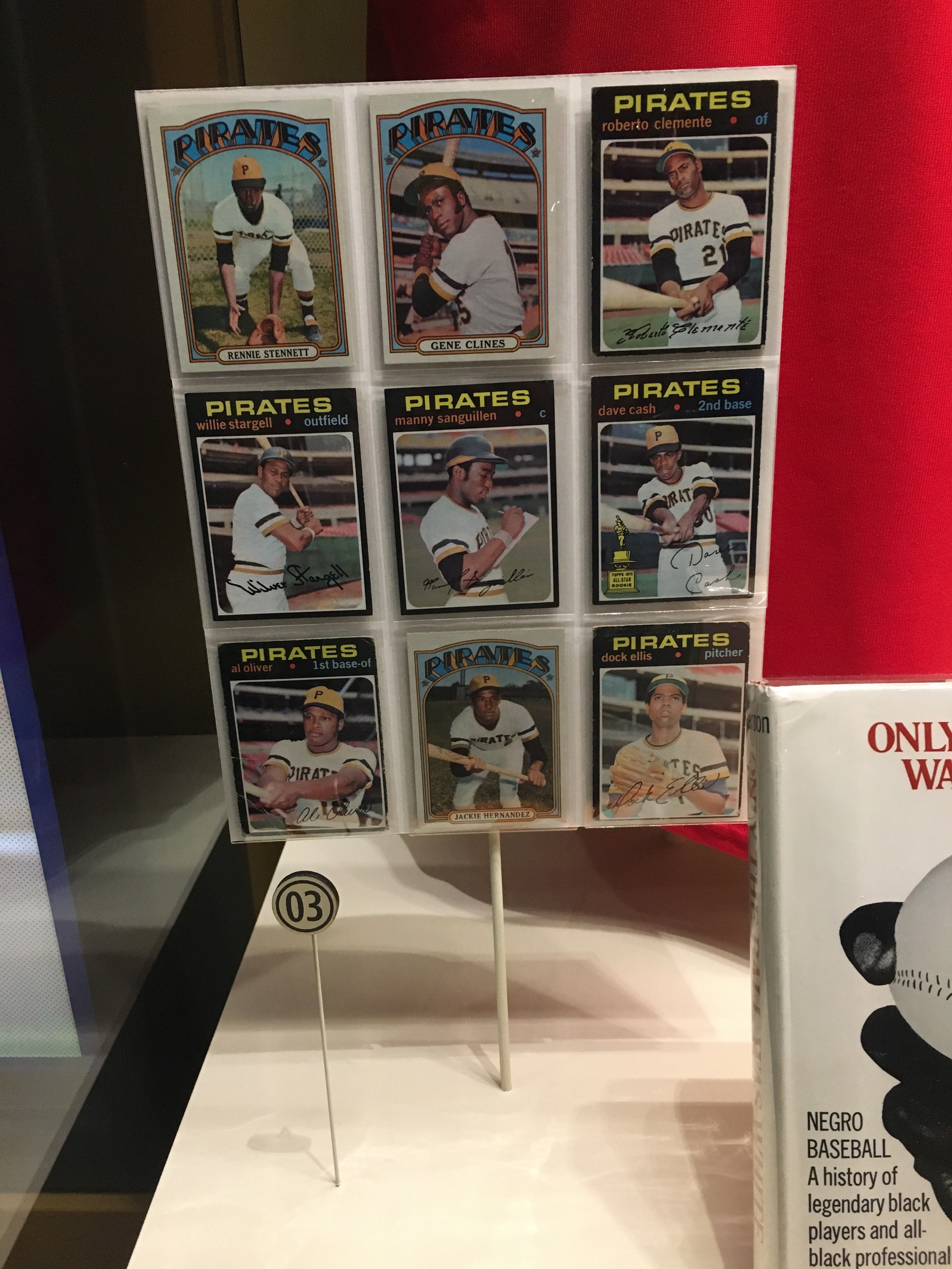
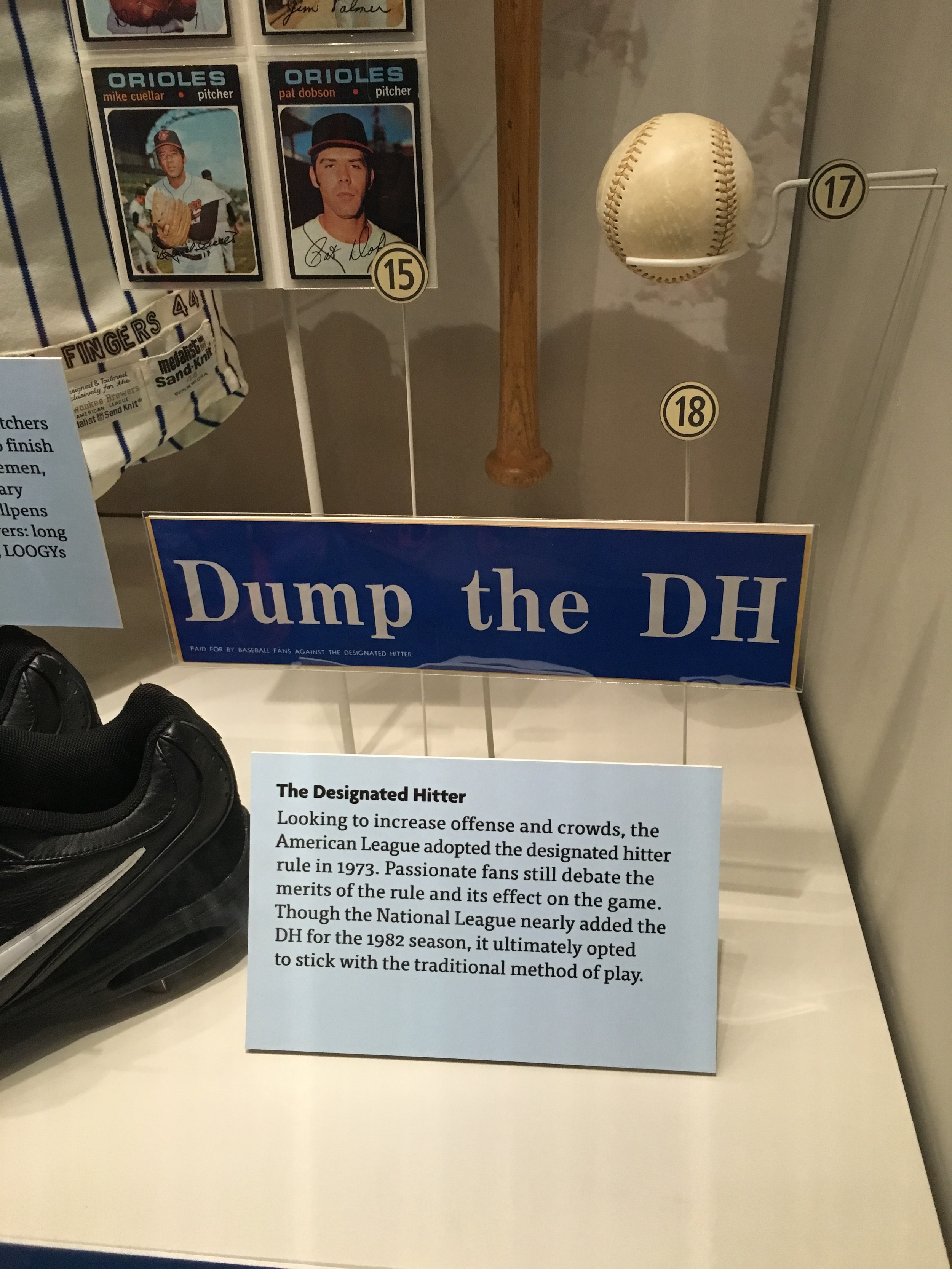
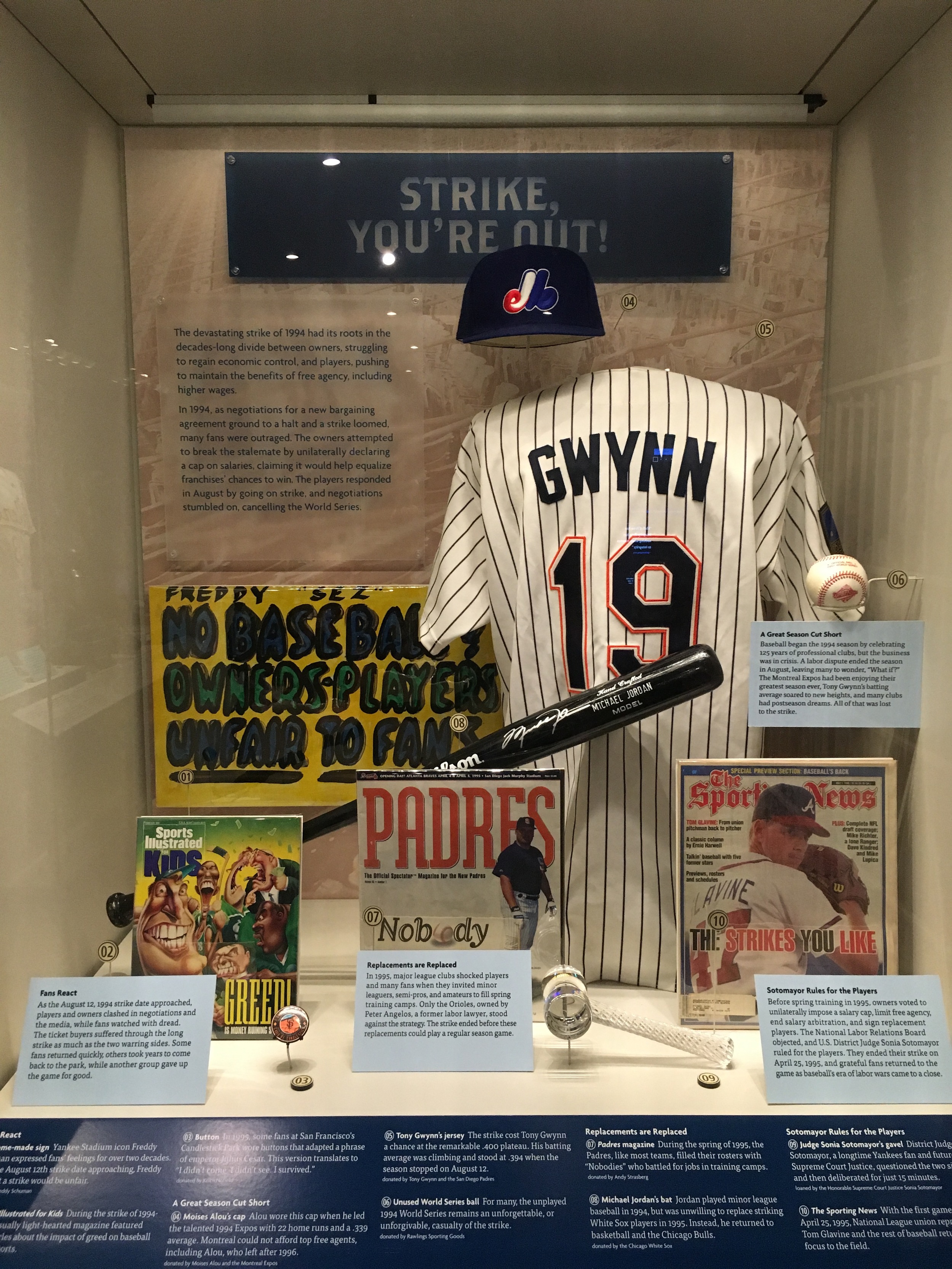
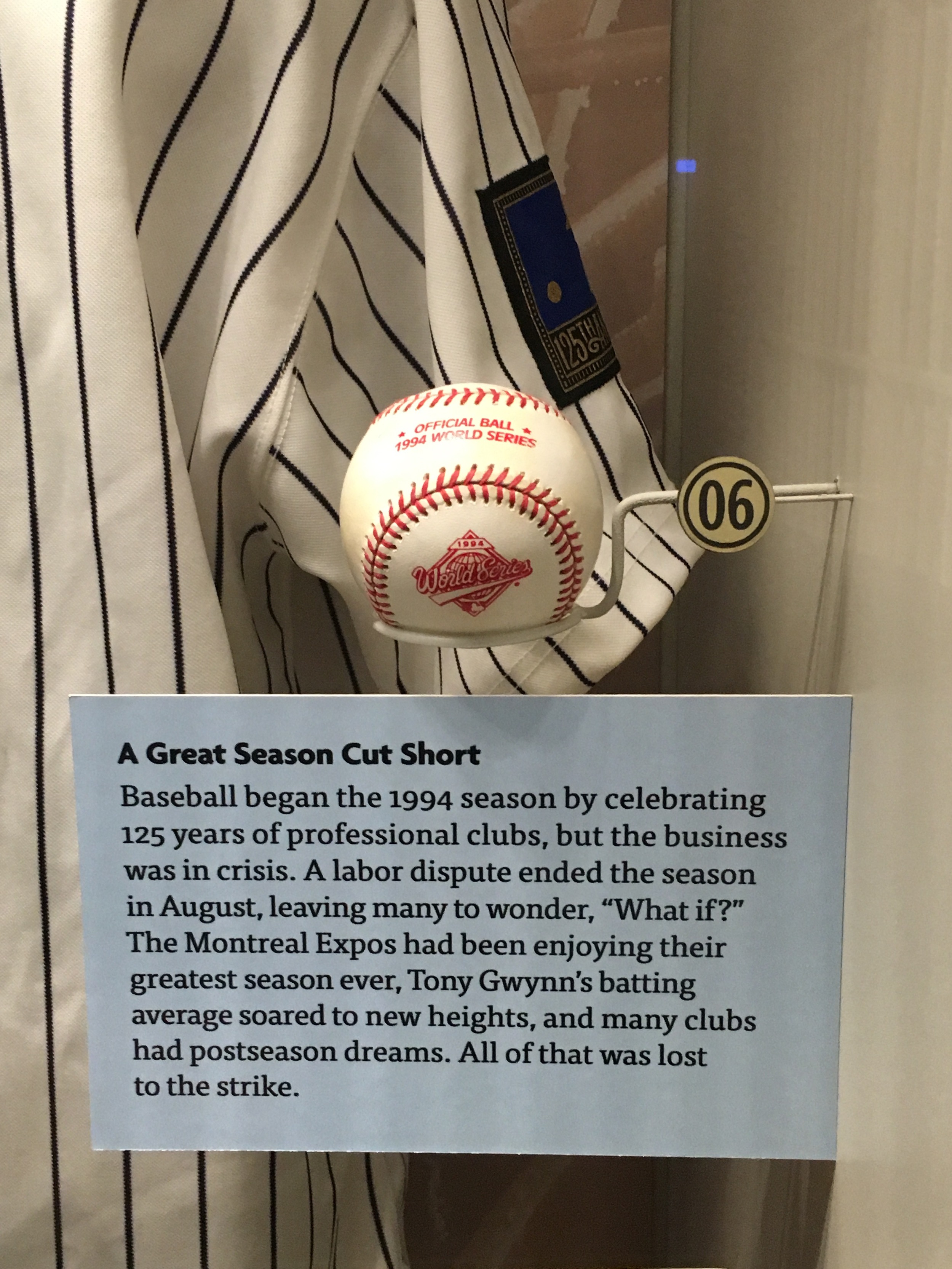
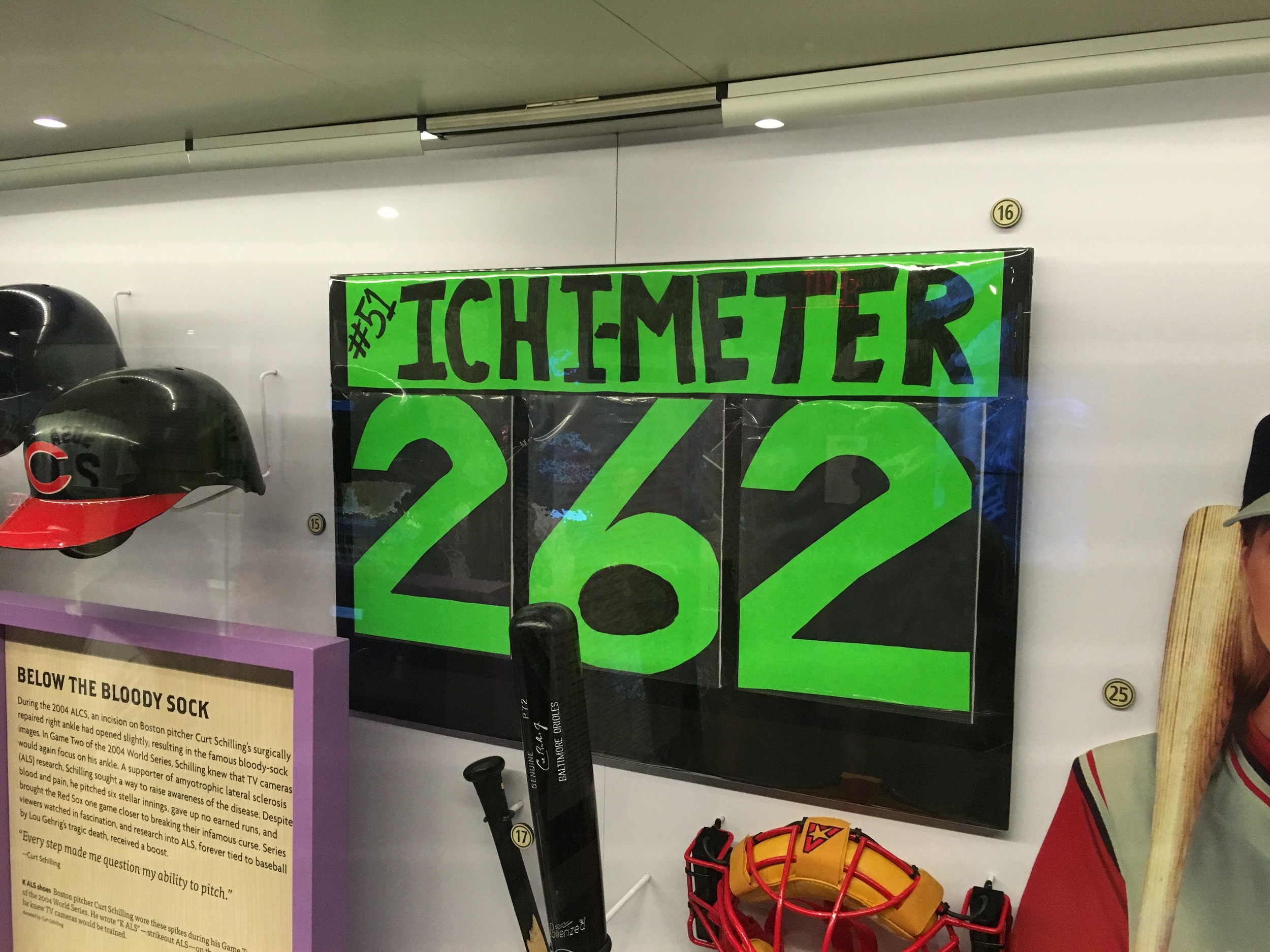
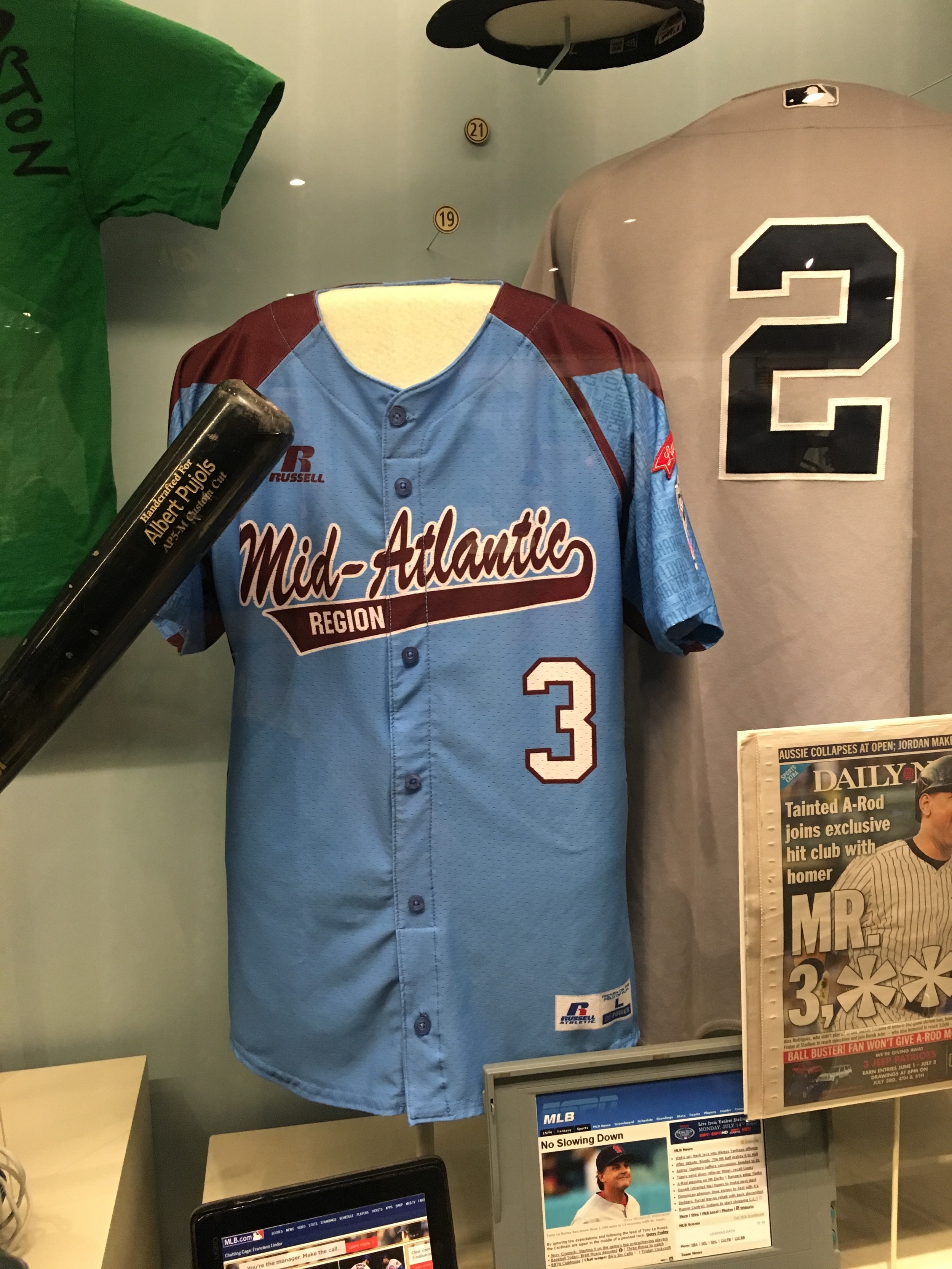
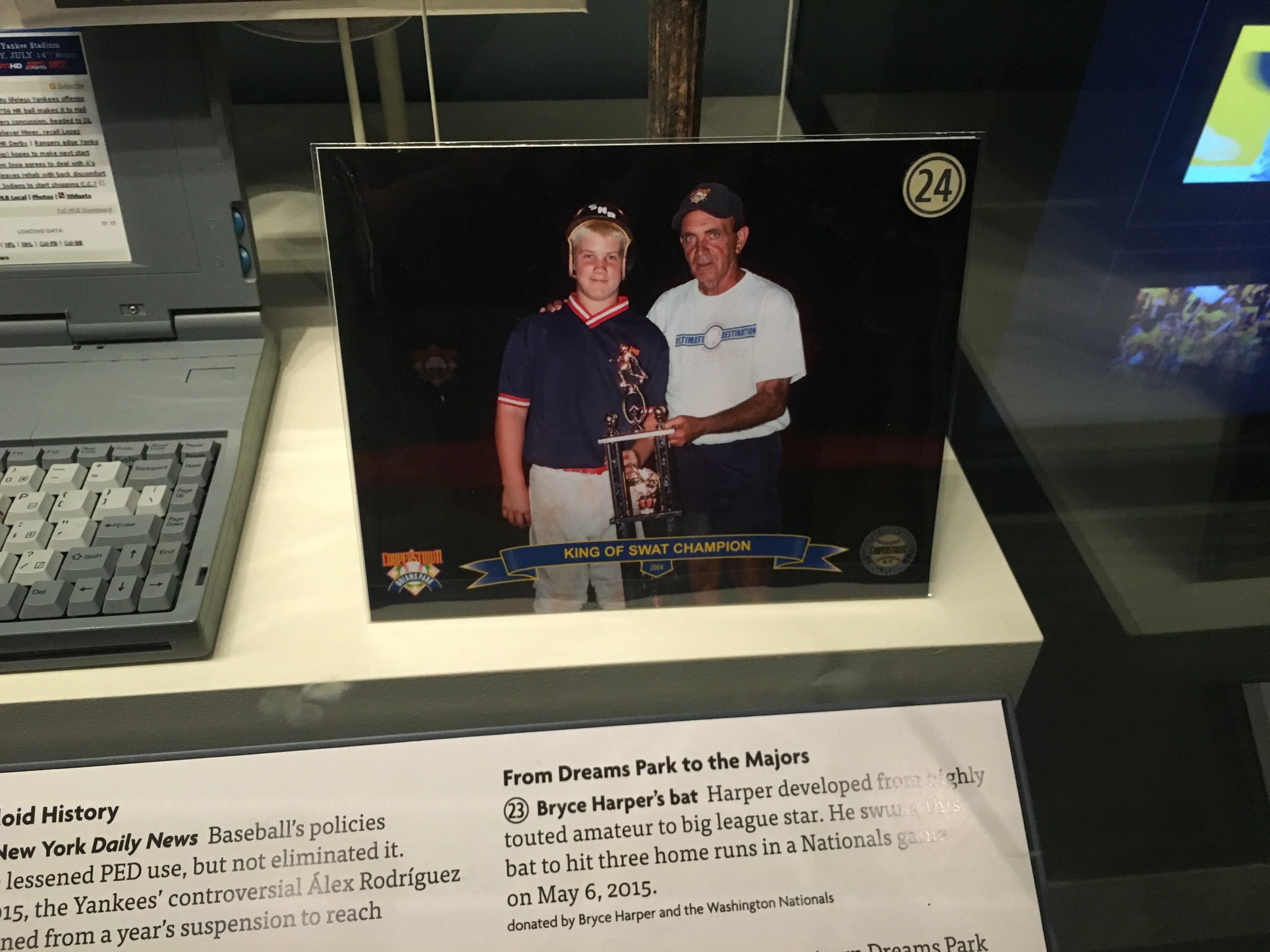
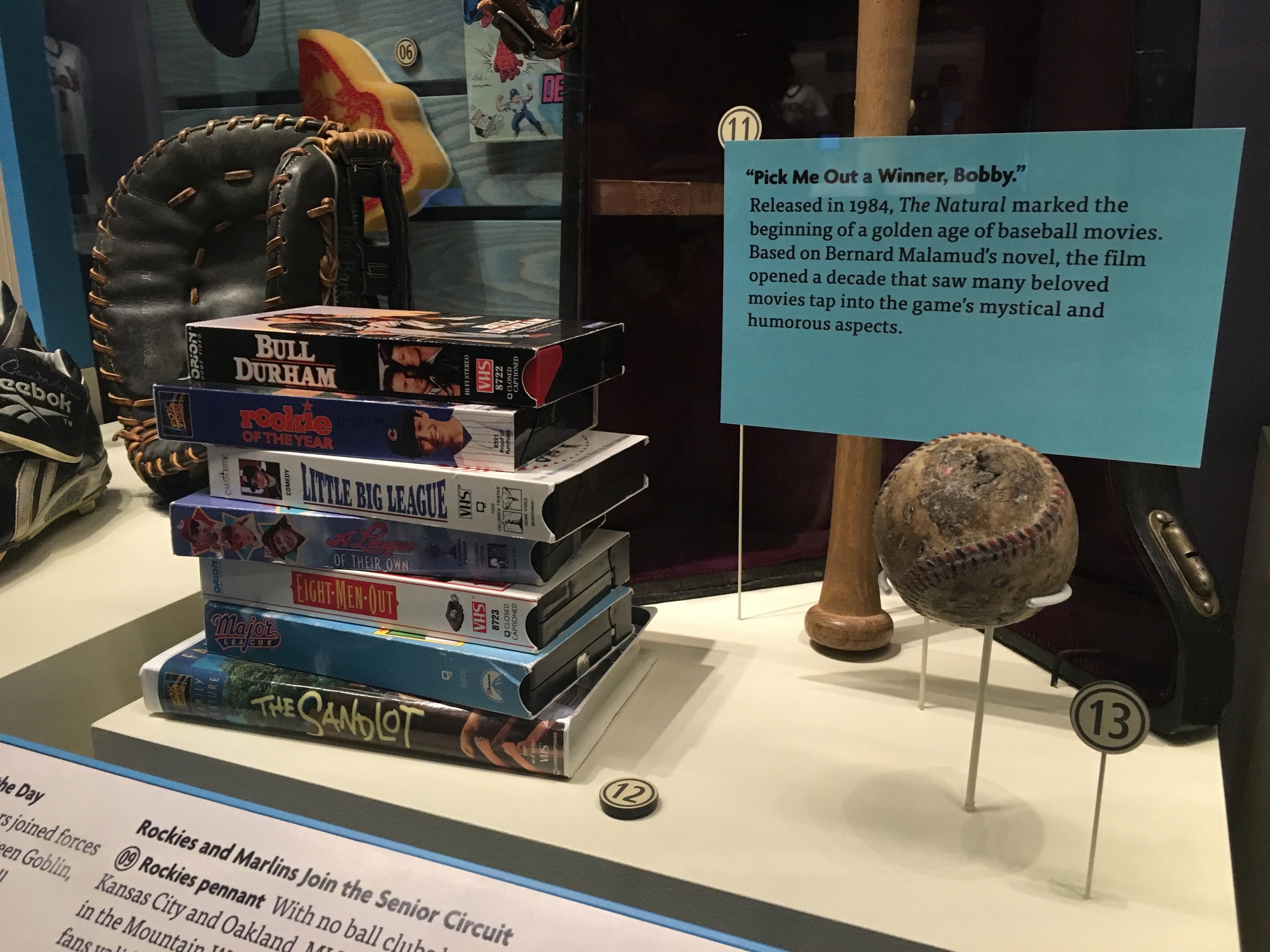
This exhibit features several cool interactive touchscreens with playlists of major highlights from every decade or so. In one of my most devious and proud moments, I looked around and made sure there were Boston Red Sox fans in the area and cued up the Bill Buckner play from the 1986 World Series. Like a terrier hearing a dog whistle, several of them recognized it from the audio alone. Groans of “Ah, no….NOOOO!” spread across the room. “Ah jezsus, it’s Bill Buck-nah. Sometimes when I dream, I dream he caught the ball.” I’ve never felt such a satisfying feeling of schadenfreude as I strolled to the next exhibit.
The late 1980’s to 1990’s section, truly MY section of childhood fandom, featured several of my favorite highlights from Griffey, Bo Jackson, the Kirk Gibson Dodgers World Series walk off, Rickey Henderson, and that time Randy Johnson scared the piss out of John Kruk at the All Star Game. There is a section serving as a sad reminder of the 1994 strike and all the things that could have been (RIP hypothetical World Champion Montreal Expos). Things get a bit weird, however, as you approach the prime steroid era. The Hall of Fame is very clearly in a purgatorial state of cognitive dissonance regarding how to remember the McGwire/Sosa arms race and Barry Bonds’ existence in general. One item I found utterly shocking due to both my lack of awareness of it and the insane brazenness of it, was Bonds’ record breaking 756th home run ball. The story goes something like this: a fan caught the ball and auctioned it off to the highest bidder. Marginal clothing brand owner Marc Ecko (remember him? I didn’t until just now) paid an insane amount of money for the ball and then preceded to impose his unsolicited opinion on the state of baseball history by carving an asterisk into the ball, denoting how the record is tainted by Bonds’ steroid usage. I guess I’m just taken aback on how he willfully defaced a historical article because he hated Barry Bonds that much. And then he donated it to the Hall for the world to see. It today’s terms, it would like if some internet blowhard paid money to have a garbage tweet he wrote about how much he hates the “Ghostbusters” remake displayed on a large billboard in a major city.
Okay, so here’s another digression. Personally, I think Barry Bonds was probably a Hall of Fame-caliber player before he started using steroids. If you’ve watched “The 10th Inning” by Ken Burns, you know the long set of circumstances that apparently led Bonds to feel the need to start using steroids. He was tired of his baseball accomplishments being constantly overshadowed by other players year after year, the last straw being the obviously juicing Mark McGwire and Sammy Sosa and their pursuit of breaking the single season home run record. That was the tipping point more or less of steroid usage in MLB as we all went absolutely bananas for home runs for a few years. Bonds already had extremely polished plate discipline and power and steroids just amplified the pitches he decided to severely punish with a swing. It’s difficult for me to debate the right or wrong of the situation when so many players were obviously using the same drugs in order to remain competitive. I am, however, firmly in the camp that given the context of those dinger-obsessed seasons, players with pre-existing excellent numbers like Bonds shouldn’t be punished for something a huge number of players were doing while it took MLB about 2 seasons too long to really do something about it. We’re not talking a NFL and concussions level of inaction here, but when Brady Anderson suddenly goes from a previous career high of 21 home runs as a fairly young man in 1992 to 50 home runs in 1996 in his 9th season and then never even comes close to that number again post steroid crackdown, then there was obviously something fishy going on and MLB let it happen. Bonds is far from the only one to have taken the competitive advantage, but he may have been the one to put it to the most effective use given his pre-existing talent.
Okay rant over, sorry if that rustled anyone’s jimmies. Moving on, IchiMeter Lady’s hit counter from Ichiro’s record breaking 2004 season is on proud display, along with other artifacts from the 2000’s. There’s even a little section devoted to the MLB AtBat app, which is kinda absurd at first, but when you think about it’s context in MLB history and how incredibly easy it is now to follow along to any baseball game at any time, well, yeah that is pretty significant and has changed the nature of how we consume baseball dramatically. Next stop: VR glasses, I guess?
The uniform Hank Aaron wore when he broke Babe Ruth's all time home run record.
The first section of the third floor focuses on stadiums and the fan’s in-game experience. I’m guessing this section is a bit on the older side because many stadium names were outdated and it just generally had a very “made-in-2003” vibe. After that, there is a fantastic section devoted purely to Mr. Henry Aaron, his career, and home run record pursuit. Very cool stuff with a nice video interview with Aaron. After that, there is a fairly interactive section all about baseball’s many, many records. Again, this area ventures into “well, we’re not really sure about this yet” territory as Alex Rodriguez, Barry Bonds, Rafael Palmeiro, and other tainted names hold records in very prominent categories. There are also totally nonsensical items from silly records like Jon Rauch’s Twins uniform as tallest baseball player and the time some Philadelphia Phillies player no one outside of Philadelphia remembers made an unassisted triple play. But hey, goofy numbers (like ERA and pitcher wins *rimshot* hiyooo!) and records are as much a part of baseball lore as the important ones.
That evening we went to check out the nearby headquarters of the renowned Brewery Ommegang to take in my other hobby: delicious craft beer, particularly of the Belgian variety. They have a fantastic farmhouse style facility with outdoor and indoor seating, tasting room, restaurant, and production brewery. We skipped the tour and just chilled with a few beers, feeling a bit giddy from the whole Hall experience.
You can easily forget you’re in New York while in Cooperstown until you come across a near street fight and literally hear the words, “EY, I’M WALKIN’ HERE.” And watch yourself if you try to stand on a stoop of a local business to get a better view of the parade. Store owners do not take kindly to that, as my dad found out.
The downtown area is so tiny that you end up eating at the same restaurant as Brian Kenny and his family and then see Peter Gammons stroll down the street later that evening. Then you come across a crowd standing outside a restaurant because they heard Joe Torre is eating there. So there is definitely some odd autograph-hound behavior from full-grown adults at Induction weekend, but it’s not quite full paparazzi treatment.
Living Legends
Saturday was a bigger day for Hall of Fame official festivities, quickly made evident by the several thousand more people in town. I feel very fortunate that we had Friday to explore the museum before it got insanely crowded. We did go back to the Hall first thing because we had missed the broadcasters section, “Scribes and Mikemen,” which is located up and beyond the back wall of the Hall of Fame Gallery. Every Mariners fan’s jolly grandfather, Dave Niehaus, won the Ford C. Frick award for excellence in broadcasting in 2008 and has his immortal place amongst the game’s finest announcers. I was a little surprised to find out this award is more of a purely ceremonial honor as broadcasters and announcers do not get plaques like players, managers, and executives do. I think this is a common misconception among Mariners fans, so I just wanted to share this as a heads up to any Mariners fans planning future trips to Cooperstown. But Dave, man, we still miss you dearly.
In the afternoon, we headed over to nearby Doubleday Stadium (where they filmed many of the game segments of “A League of Their Own) for the first awards ceremony where they featured the Ford C. Frick and J.G. Taylor Spink honorees, as well as a segment on baseball’s role in helping people heal after 9/11. While waiting for the ceremony to start, we watched the last couple innings of the Mariners big win over the Blue Jays on my phone, surrounded by Mariners fans who had congregated in the one shady area of the bleachers. One of several moments over the weekend where I felt I was truly among my people! My heat-averse, dreadfully pale people.
The ceremony started with our first introduction of all the attending Hall of Famers, who were called out one by one to varying levels of cheering with a heavy East Coast and recency bias. And obviously people went nuts for Mike Piazza and Griffey as they were introduced last.
Next they awarded the Frick award for excellence in broadcasting posthumously to Graham McNamee, known for expertly calling some of the earliest World Series on the radio from 1923-1934. Longtime Boston Globe beat writer and columnist Dan Shaughnessy was awarded the Spink award for excellence in baseball newswriting. He delivered a fantastic speech with a few choice quotes that really drive home what it’s like to be that close to the game you love as an observer.
“40 years of writing about baseball has informed me on exactly how hard this is. Anybody who spends a single day on a big league roster represents tens of thousands of little boys who one day dreamed of playing big league baseball. If you are a fan or writer, you need to remember that the 25th guy on any big league roster is 1,000 times better than you ever were. And these ballplayers behind me – they are the best of those best. Like the Beatles and a handful of men who walked on the moon, they belong to an exclusive club and know things that no one else knows.”
The ceremony was followed by a parade down Main Street, which was equal parts cool, bizarre, and awkward. It was pretty dang neat to be within spitting distance of all these legendary players as they waved and grinned from the backs of pickup trucks with their spouses and family. But, it was a little weird as some of these fellows are very old and/or not in great health and so it felt a little like I was watching a caged, old animal in a zoo at times. Other players, like Pedro Martinez, Cal Ripken, and others were clearly having a ball with it and even talking some smack back with anyone who yelled silly things at them. I booed Goose Gossage because he represents everything backwards and out-of-touch about ball players.
Griffey with his wife and two of his kids at the Hall of Fame Parade on July 24, 2016.
Induction Sunday
Sunday was the main event. The Induction Ceremony was held at the Clark Sports Complex, which is about a mile from the Hall of Fame. A crowd of somewhere around 55,000 gathered on a massive field next to the complex. The ceremony is always free to the public, but since we signed up to be Hall of Fame members (fancy!), we had reserved seating and ended up about 100 yards from the stage. Not too shabby.
Trying to stay cool while we waited for the ceremony to start.
My very unscientific gauge of the fandom of attendees for the weekend came in at about 40% Mets fans, 30% Mariners fans, 20% Reds fans, and the rest being fans of Yankees/Red Sox/Cubs/Dodgers and every other odd team. Shoutout to the fairly strong contingent of Expos fans still holding on to the dream. I really wanted to chat with some Reds fans about their feelings on Griffey, but I never got a chance. Given just the sheer number of Reds jerseys I saw, it’s clear they love the guy, too. But, I just have so many questions about how they really feel given all the injuries, reduced production, and general steep decline they witnessed from the Kid while in Cincinnati in comparison to his time in Seattle. Regardless, the Reds fans in attendance cheered loudly whenever any reference was made to his time there.
Longtime Baltimore Orioles announcer Gary Thorne introduced all the attending Hall of Famers again with their notable career accomplishments. Randy Johnson got a standing ovation from all the Mariners fans in attendance, of course. As did players golden era players like Sandy Koufax (!!!!) and Whitey Ford. After a few more intros from Hall of Fame Chairman Jane Forbes Clark and Commissioner Rob Manfred, Mike Piazza was up first for his speech (a wise move, Hall event planners). Piazza was very poised and gave a really great, heartfelt speech. As someone who only knew of him mainly through his Dodgers rookie cards, it was really cool to hear more about the ins and outs of his career. I never really got to see him play much since he spent almost his entire career in the National League, but it’s clear he deserves his place in the hall as one of the best hitters to have played catcher for as long as he did.
After a short TV timeout for MLB Network, it was time for the Kid. An intro video featuring our Patron Saint of Base Throwing, Lou Pinella, went through some of Griffey’s biggest moments and highlights, from his first wall climbing home run robbery, to him flying around third on The Double, to him hitting the warehouse at Camden Yards. I also loved that they had Lou tell the story of Griffey losing a bet to him on a steak dinner during Spring Training and thus arranging for a huge steer to be placed in Lou’s office. Baseball players do love a good prank.
Griffey then walked to the podium to a massive, MASSIVE standing ovation. I’m sure you’ve all watched his speech at this point, but man, it was clear right away that he was going to be a puddle up there. A lot of emotion. And that’s wonderful. He scuffled a bit, but again he was incredibly authentic, mature, humble, and real. And I get it. I’m fairly confident Griffey is a fellow introvert and if I had to guess his Meyers-Briggs type, I’d say INFJ. That’s pure speculation on my part, but I just throw that in to say that reflection seems difficult for him, both emotionally and cognitively. Getting it all out is hard. Overall, he did a remarkable job thanking his family and everyone who helped him during his career, and he even vouched for Edgar being in the Hall. Well done, Griff.
Junior ended his speech by pulling out a Hall of Fame hat and putting it on backwards in classic Griffey style. Photo from Boston Globe
Speaking of Edgar, as the final ovation died down, the familiar chant of “EEEED-GARRRRRR” started rising from the crowd and lasted for about 30 seconds. I dutifully partook as my role as bitter Seattle sports fan dictates I must. It was a pretty great moment to end on.
Sun cooked and sweat soaked, we walked back to downtown Cooperstown and refilled our tanks with delicious pizza and celebratory cold beers, and also just happened to run into my friend from back home, Matt. As the weekend winded down, there was just one more important stop to make: seeing Griffey’s freshly minted plaque.
The line in the gallery was long and slow moving, but we hung in there and chatted with the Seattle fans near us. Over the course of the weekend, it was fun gathering info on where they’d traveled from and with whom. We met folks from all over the state, from Spokane to West Seattle, and many fathers and sons just like us.
We finally made it to the plaque right before closing time. We got our photo taken, happy and proud to be there paying tribute to the Kid. As we left the museum and waited to catch the trolley bus back to the park and ride lot, a handful of adults and kids were playing whiffle ball on Main Street as the last bits of sunlight faded out. Should have sent a poet.
Stray Observations:
- If you, Seattle sports fan, paid good money to make the journey all the way to Cooperstown from Washington to honor Ken Griffey, Jr at the Baseball Hall of Fame, maybe leave the Seahawks gear at home, okay? Just a thought.
- Sandy Koufax’s real first name is Sanford B-)
- For about 90% of the plaques, the player likeness seemed to lean heavily toward the twilight years of the player’s career. Kind of a strange trend and I wonder how intentional it has been. Griffey’s likeness is, well, certainly not of him at 22.
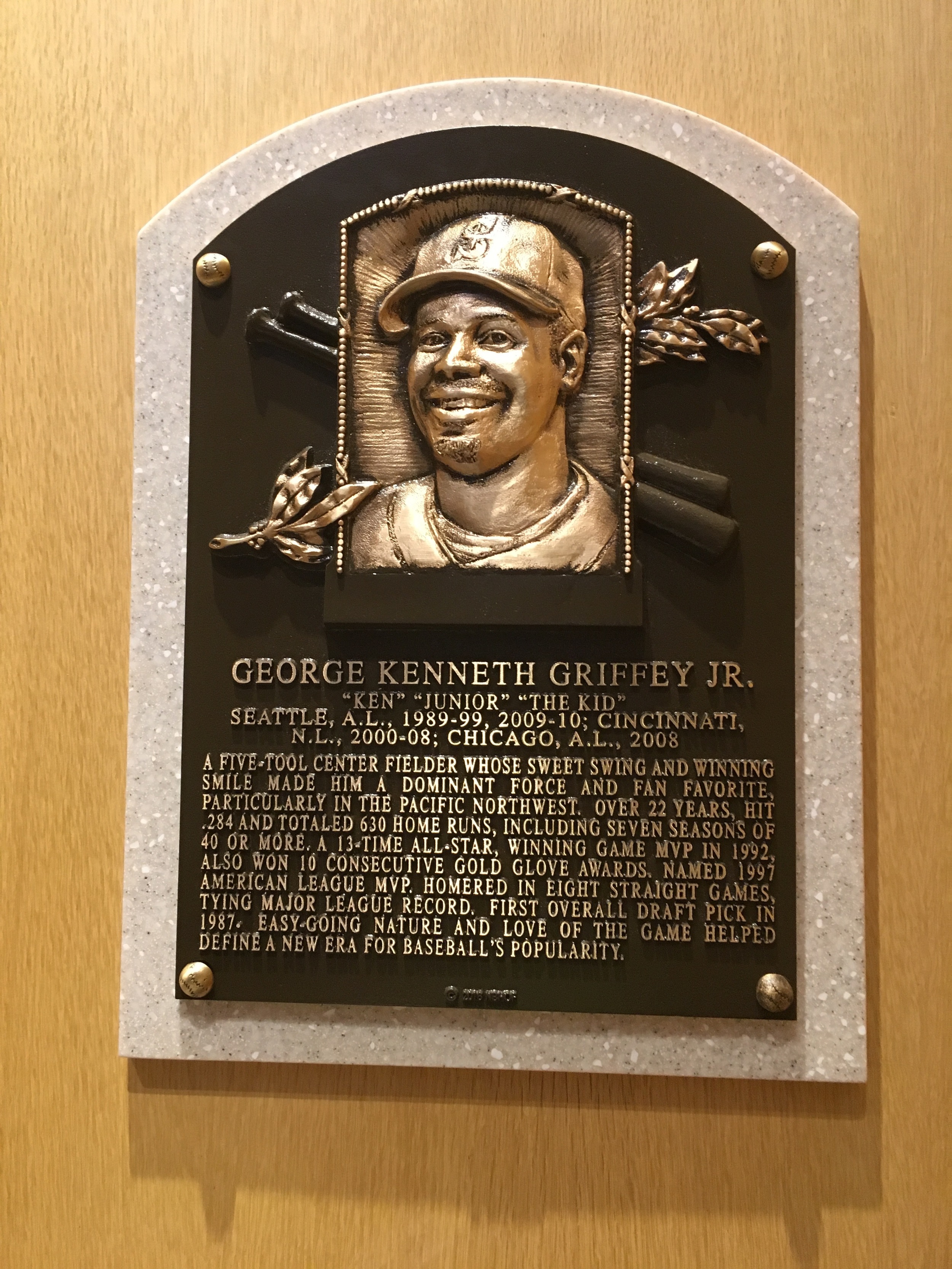
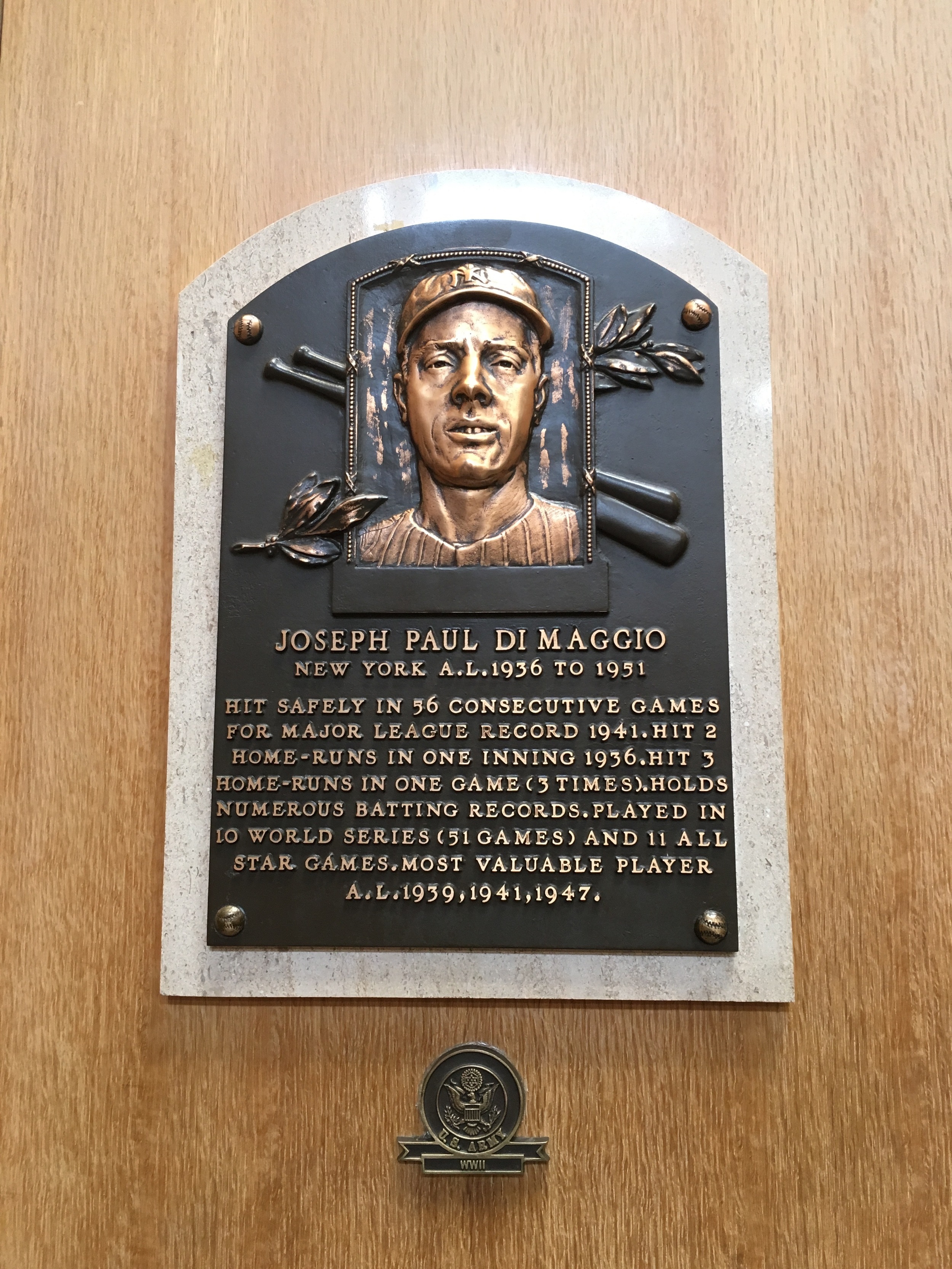
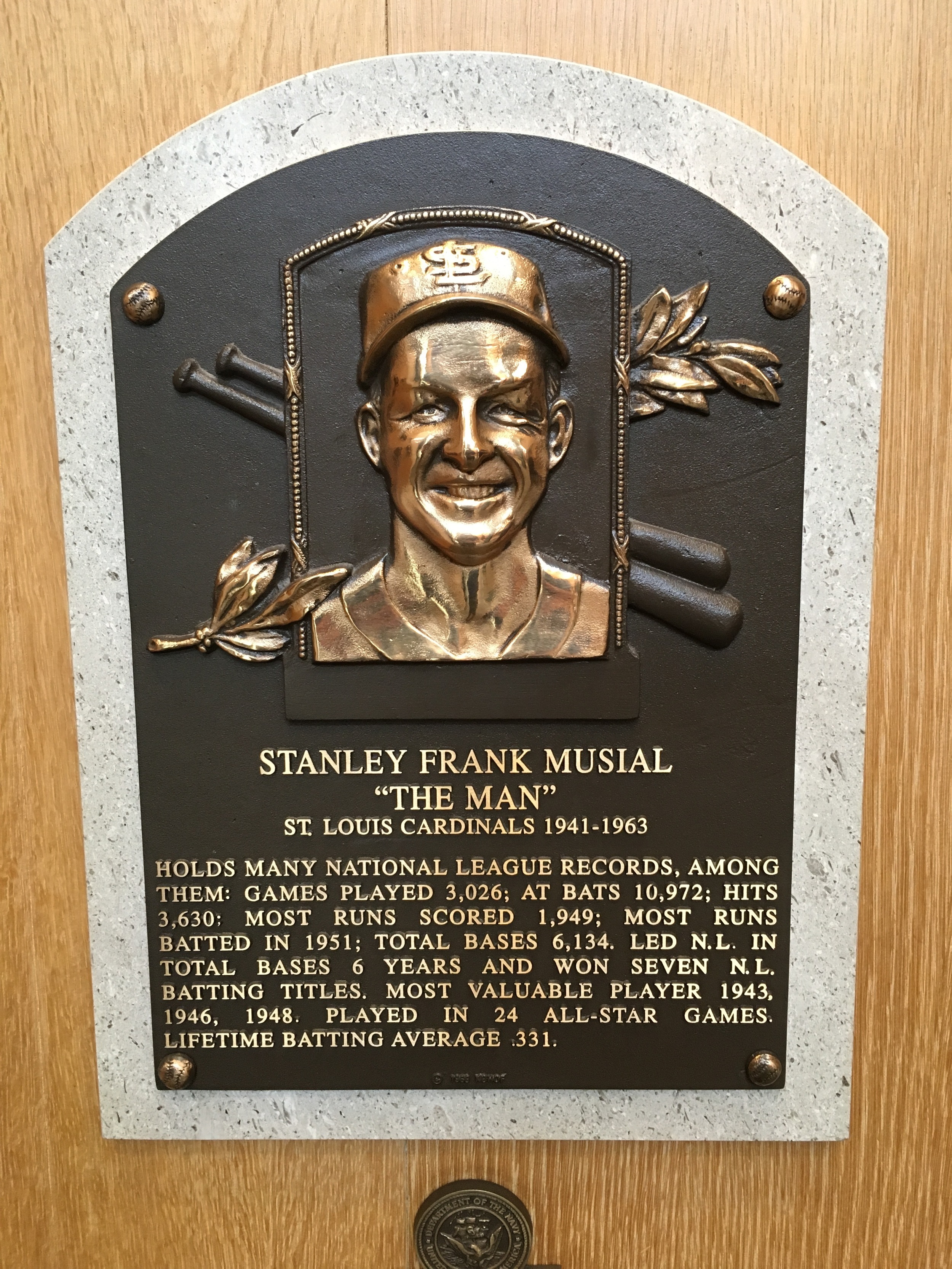
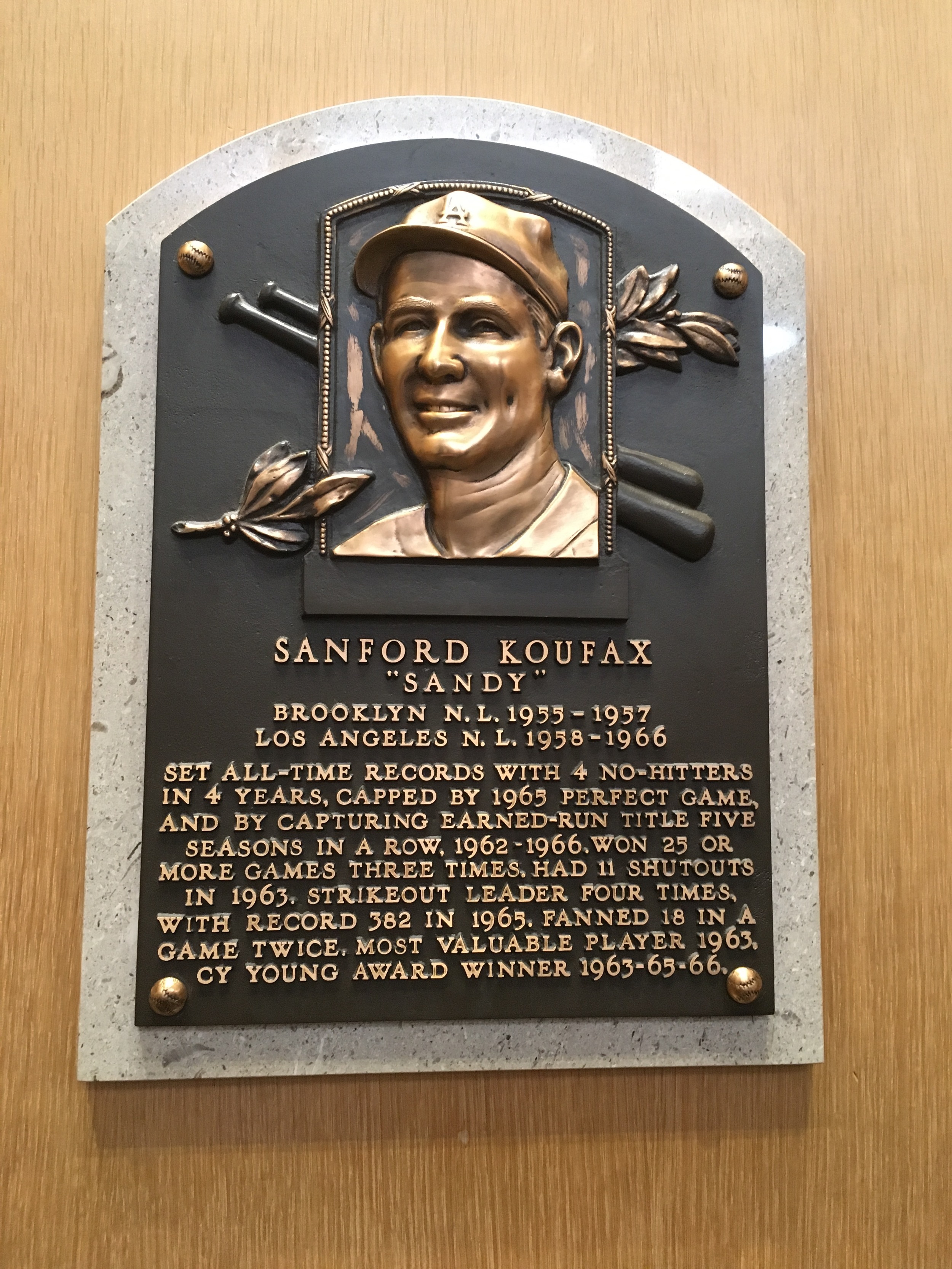
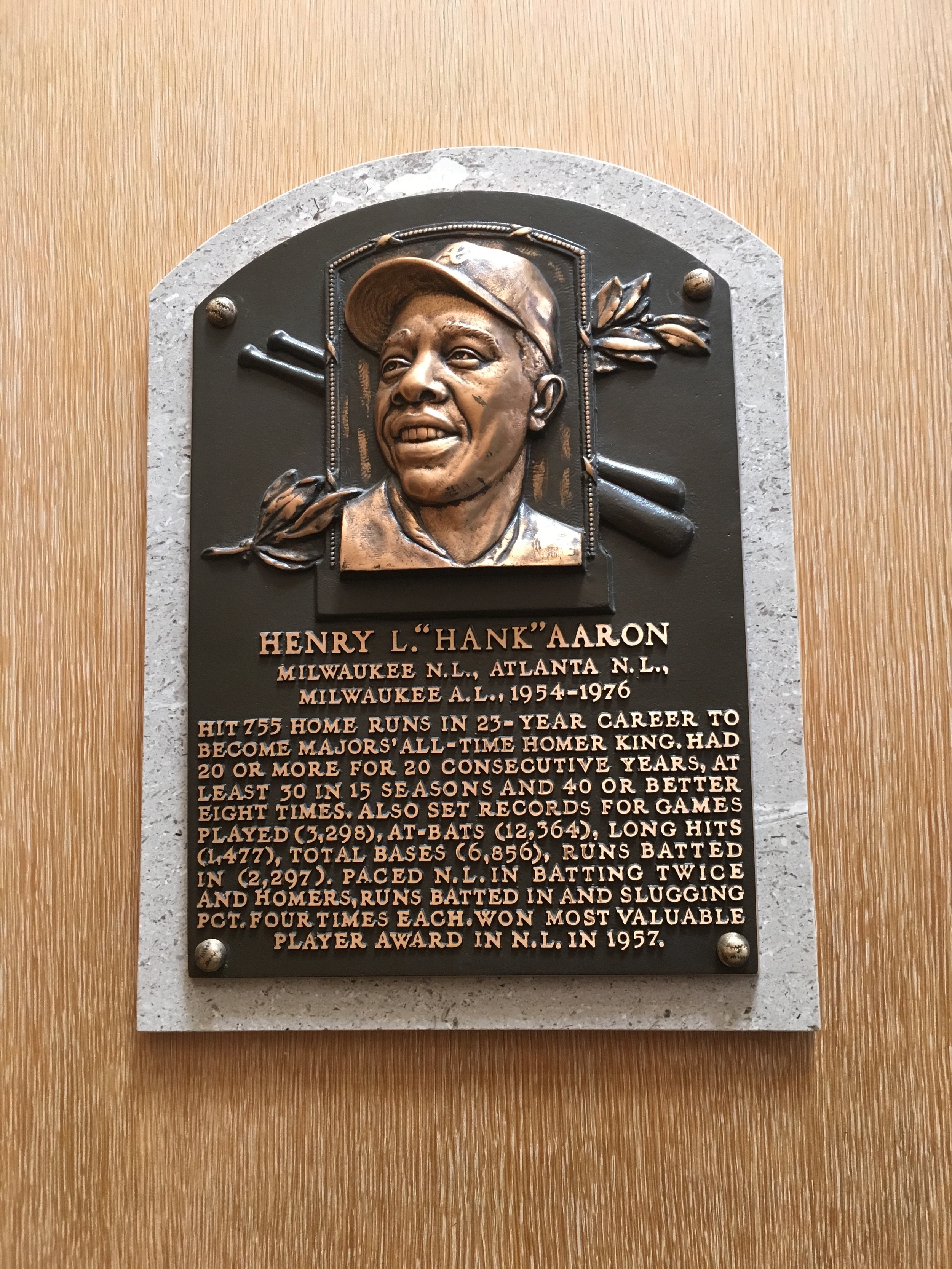
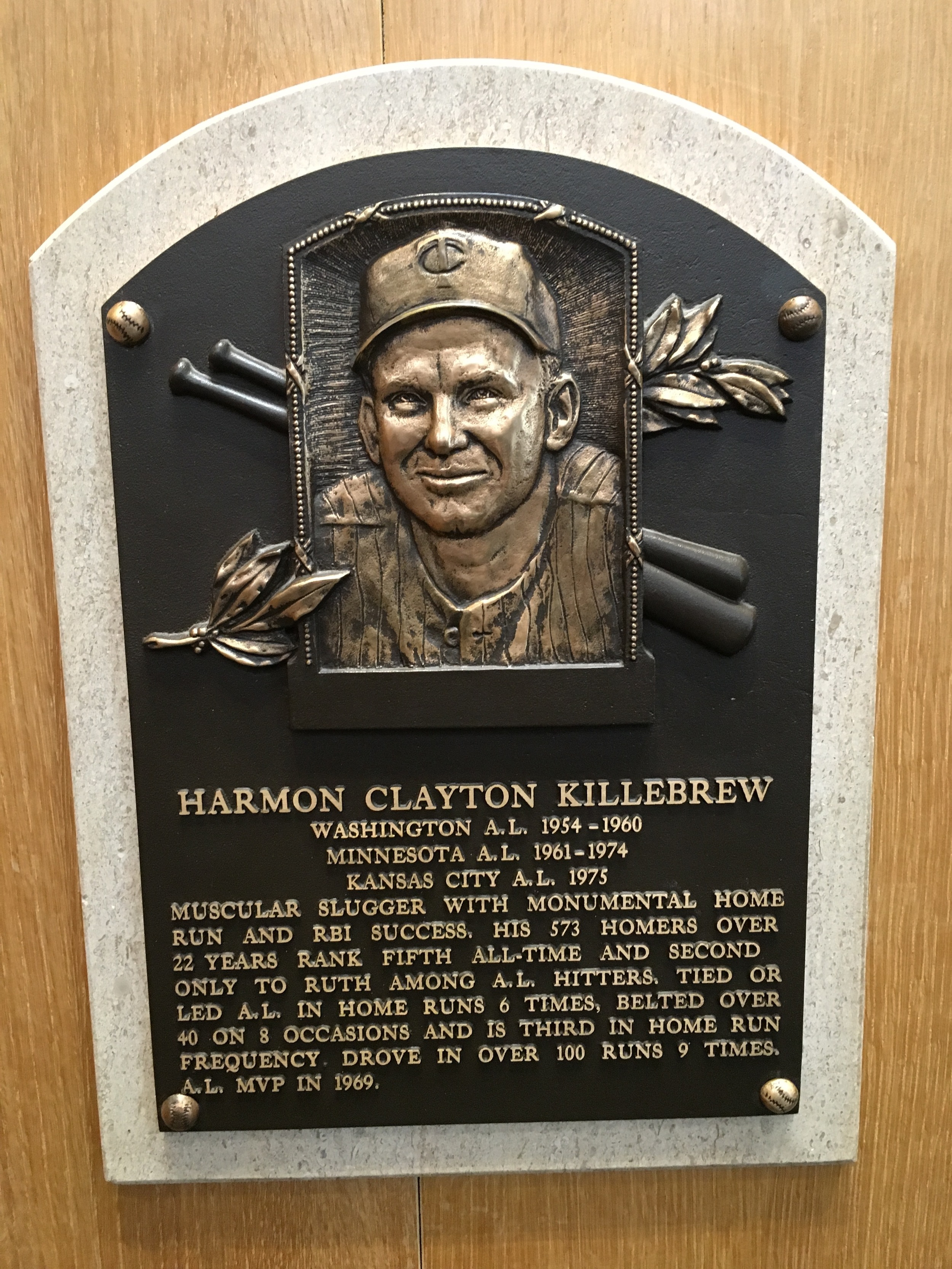
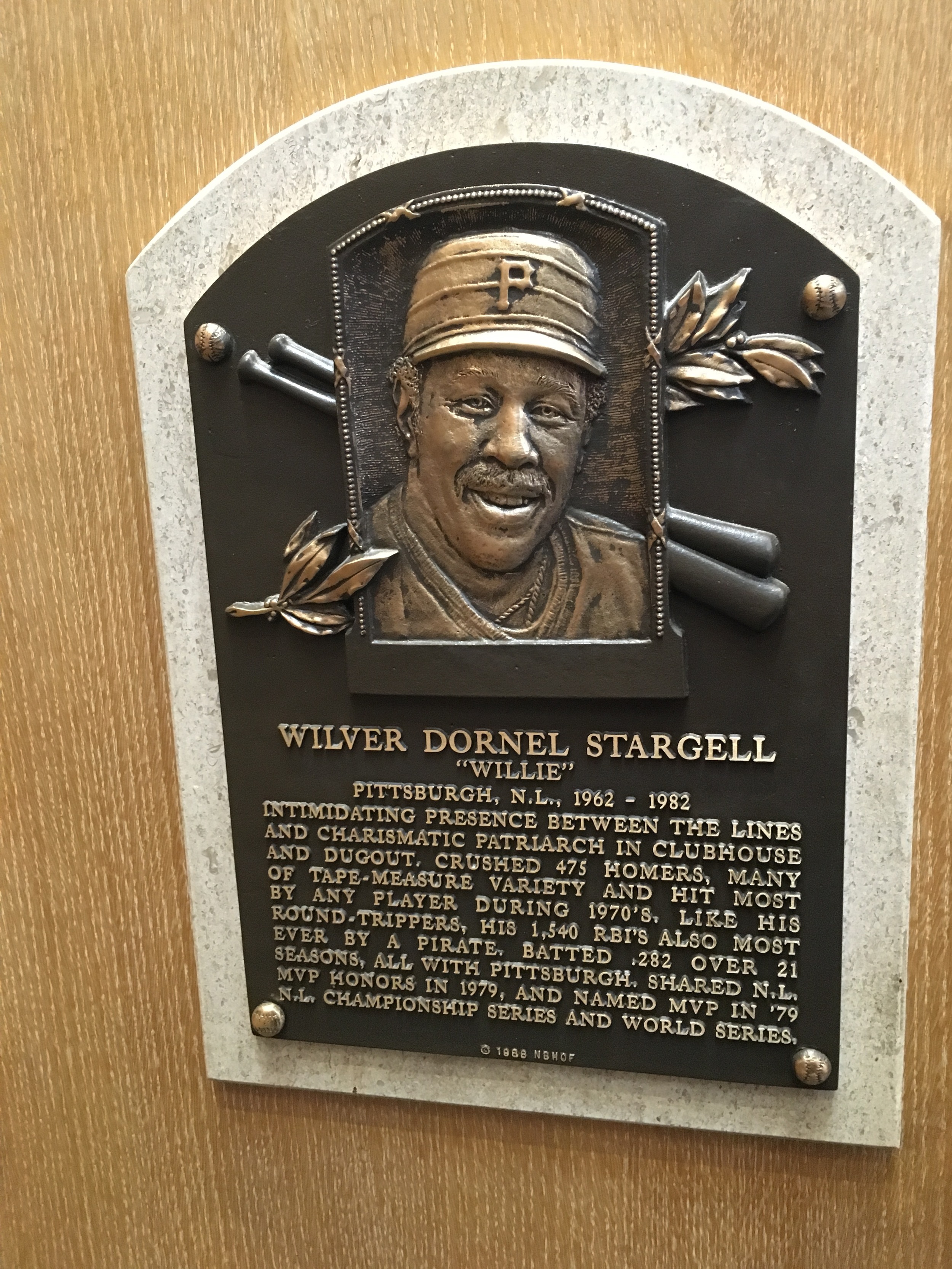
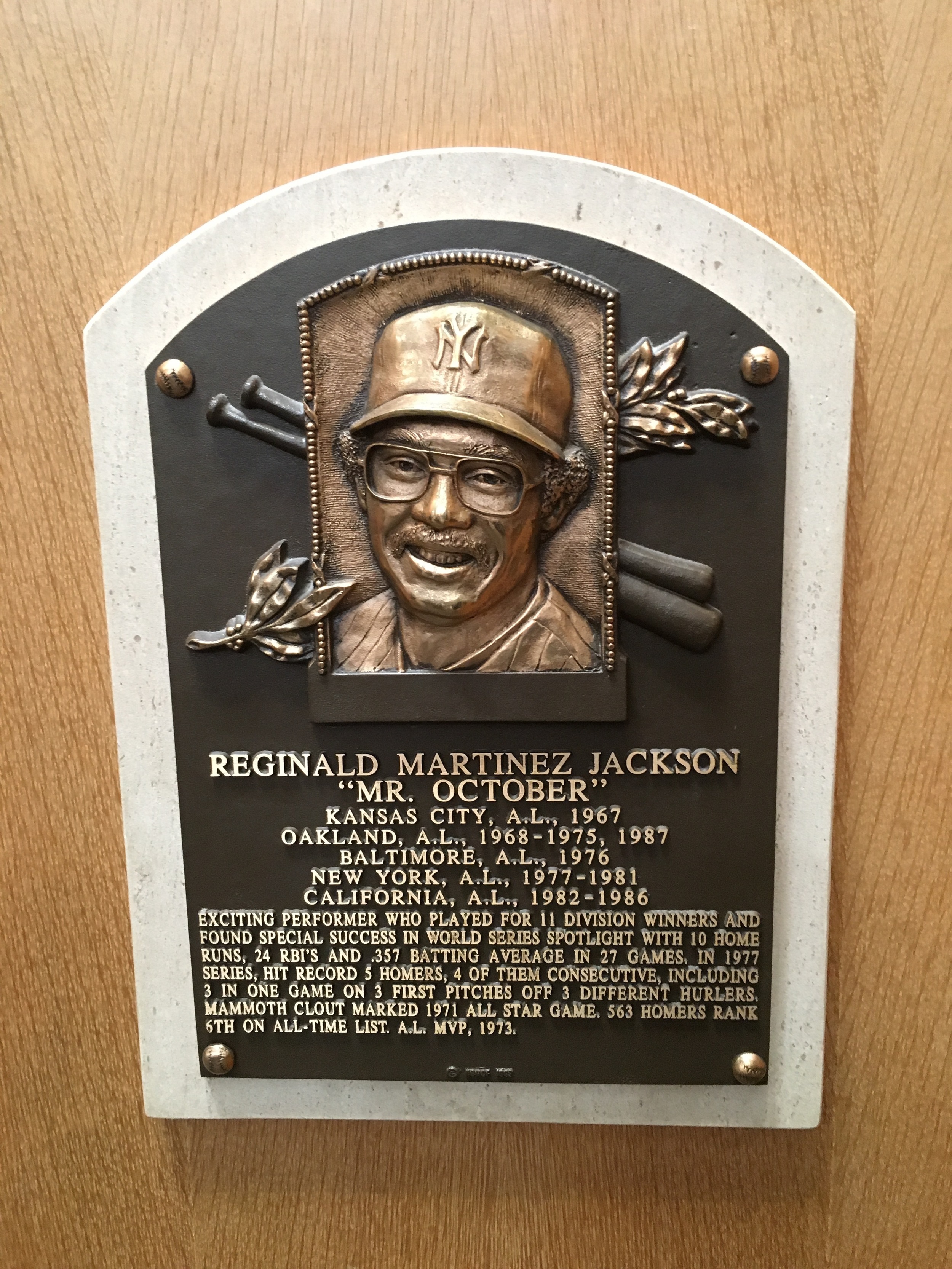
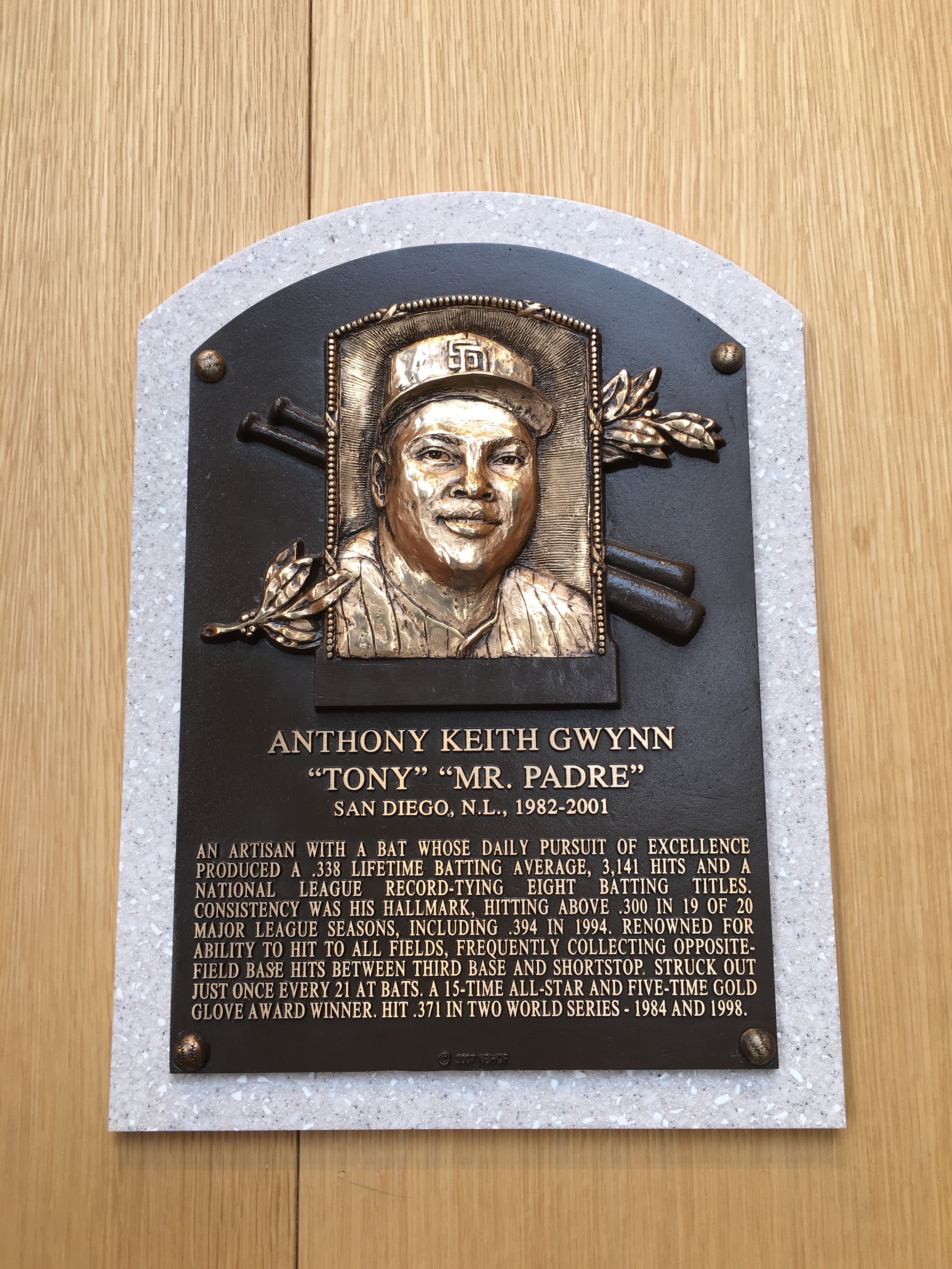
- Mets fans are, by and large, a nice and lovable bunch who are clearly riding that post-World Series appearance wave of pride. Good for them.
- The Mariners locker featured the following head-scratching items.
- A photo of Kyle Seager running, presumably at an adorably slow speed
- A lineup card from 2012 featuring several of the all time worst and/or disappointing Mariners players such as Miguel Olivo, Chone Figgins, Dustin Ackley, Casper Wells, and the lovable clown prince of baseball, Munenori Kawasaki
- A signed ball from the 2012 six pitcher combined no-hitter instead of say, a ball from Felix’s perfect game or Iwakuma’s no-hitter
- A sign calling attention to the grand total of World Championships won by your Seattle Mariners: 0
Yeah, thanks guys. WE KNOW.
- Favorite non-Griffey Mariners jerseys spotted over the weekend: John Mabry, Rich Donnelly, and Erik Bedard.
- I have so many #HotTakes and questions about this Cincinnati Reds Griffey muscle car that I don’t even know where to start.
- The amount of people wearing the hat of one team and the jersey of another over the weekend made me question my own sanity for a bit.
- In person, Frank Thomas is an absolute mountain of a man. So are Dave Winfield, Eddie Murphy, and obviously Randy Johnson. But, Frank Thomas…his arms are still the size of my dang head.
- I have never seen a better expression of bemused contempt than on Joe DiMaggio’s plaque.
- The Mariners lost 2-0 to the Blue Jays during the Induction Ceremony and I don't think I've ever cared less about a loss.
I will sign off with a passage I submitted to Lookout Landing’s Griffey Scrapbook page last month on what Griffey means to me:
I don't have any stories about meeting Junior or getting his autograph or anything. All I have is the fact that my lifelong devotion to the Seattle Mariners is Ken Griffey, Jr.'s fault. I obsessed over his baseball cards in the late 80s and early 90s. I screamed with joy in 1995. I was thrilled and then crushed by the playoff loss in 1997, still the only Mariners playoff game I've ever attended. I was crushed again in 1999 when Junior insisted on leaving. I was very pleased when he came back in 2009, worried when he came back again in 2010, and then angry with how he left the team mid-season. I was angry until he made his heartfelt speech as he was inducted into the Mariners Hall of Fame. Call it rose tinted if you want, but his latter day transgressions were not unforgivable when compared the to the years of high-grade performance he gave this team and this region. Nothing can take away those glory years, those memories, those highlight reels, and those sacrifices. In a few short weeks, I will be in attendance in Cooperstown when the Kid takes the stage and receives his due. My dad, who taught me his love of the game and witnessed Griffey's prime alongside me, will be there with me. I am extremely thankful for this and I will always be thankful for the Kid. Go Mariners.



